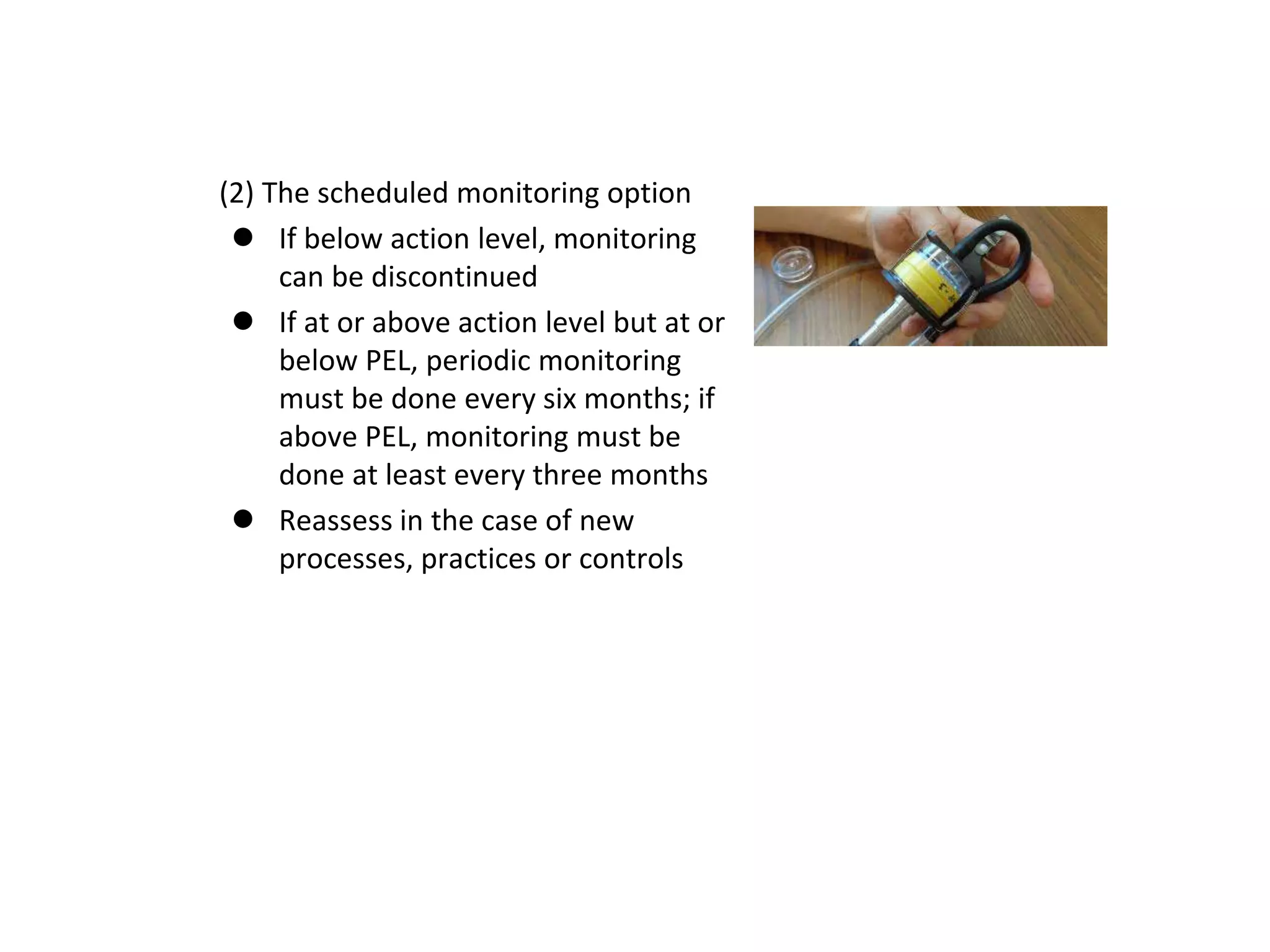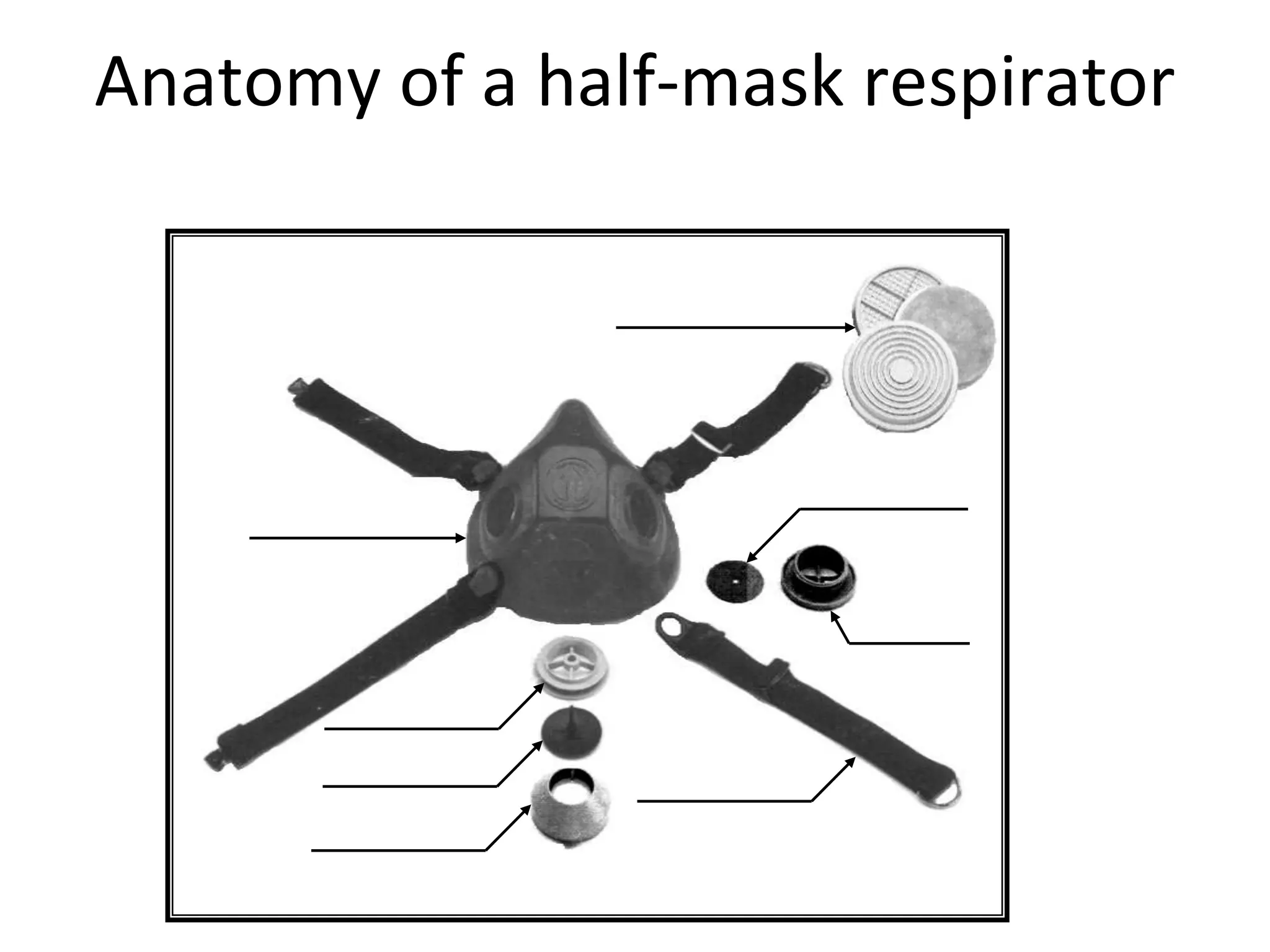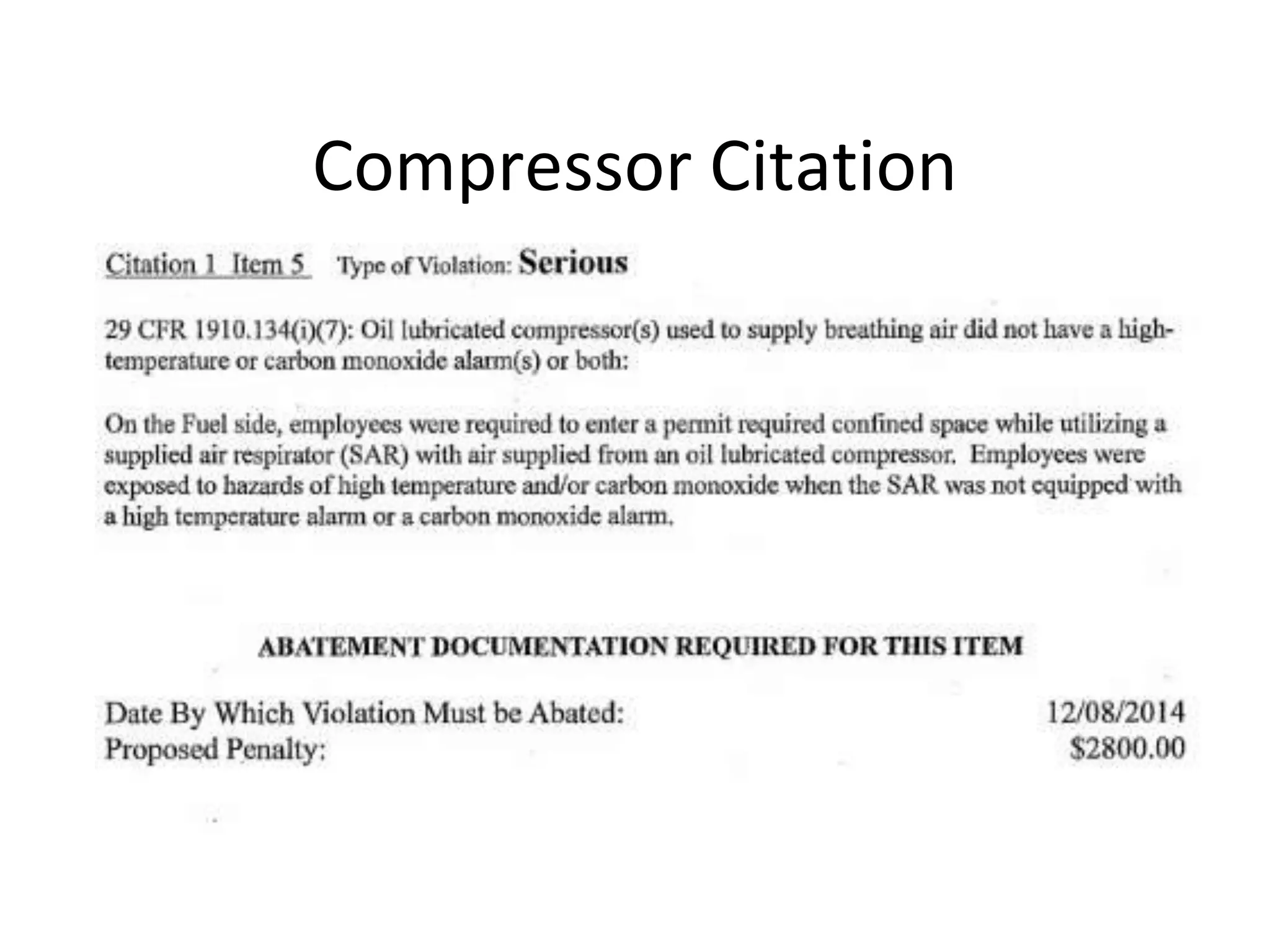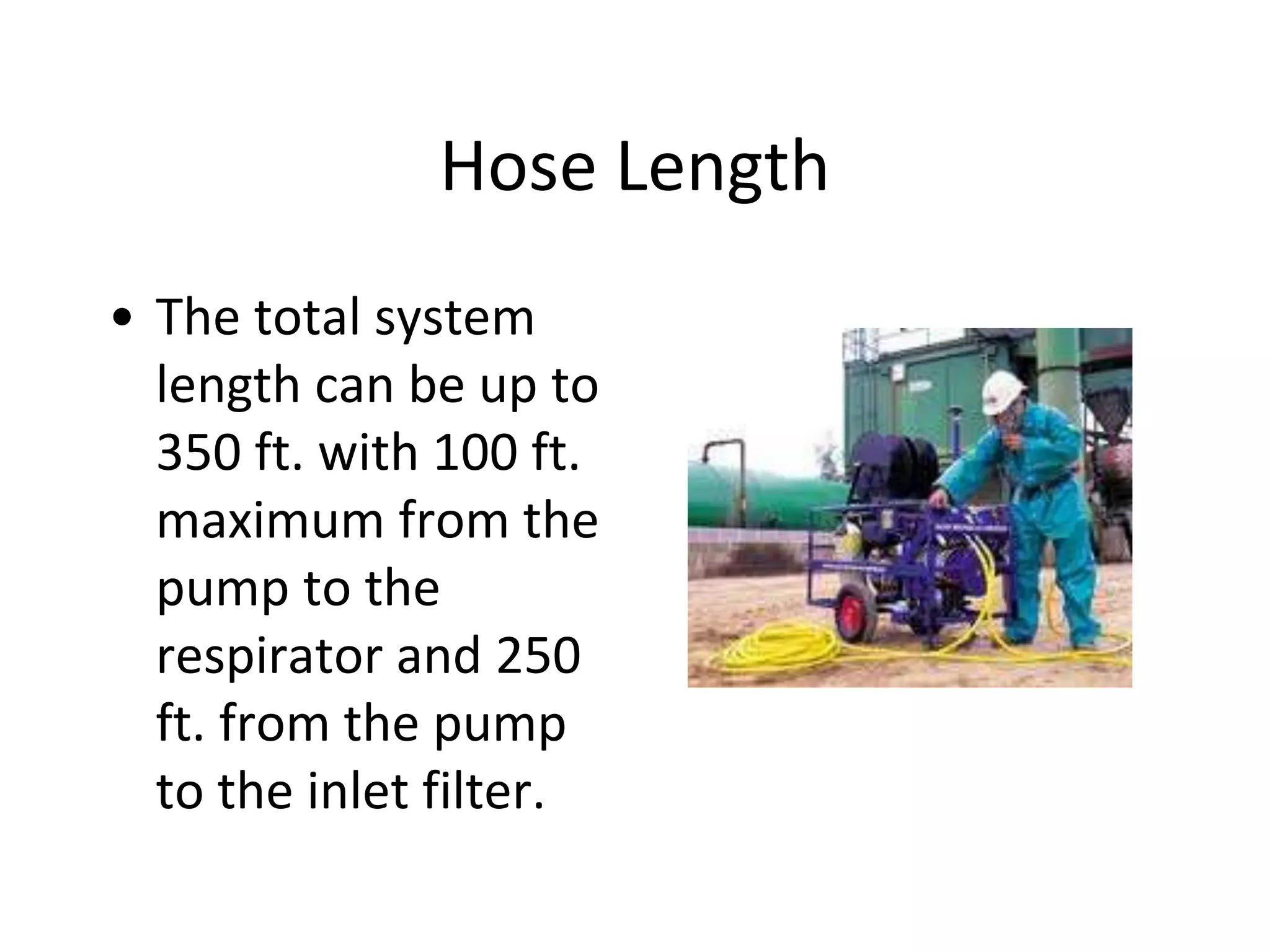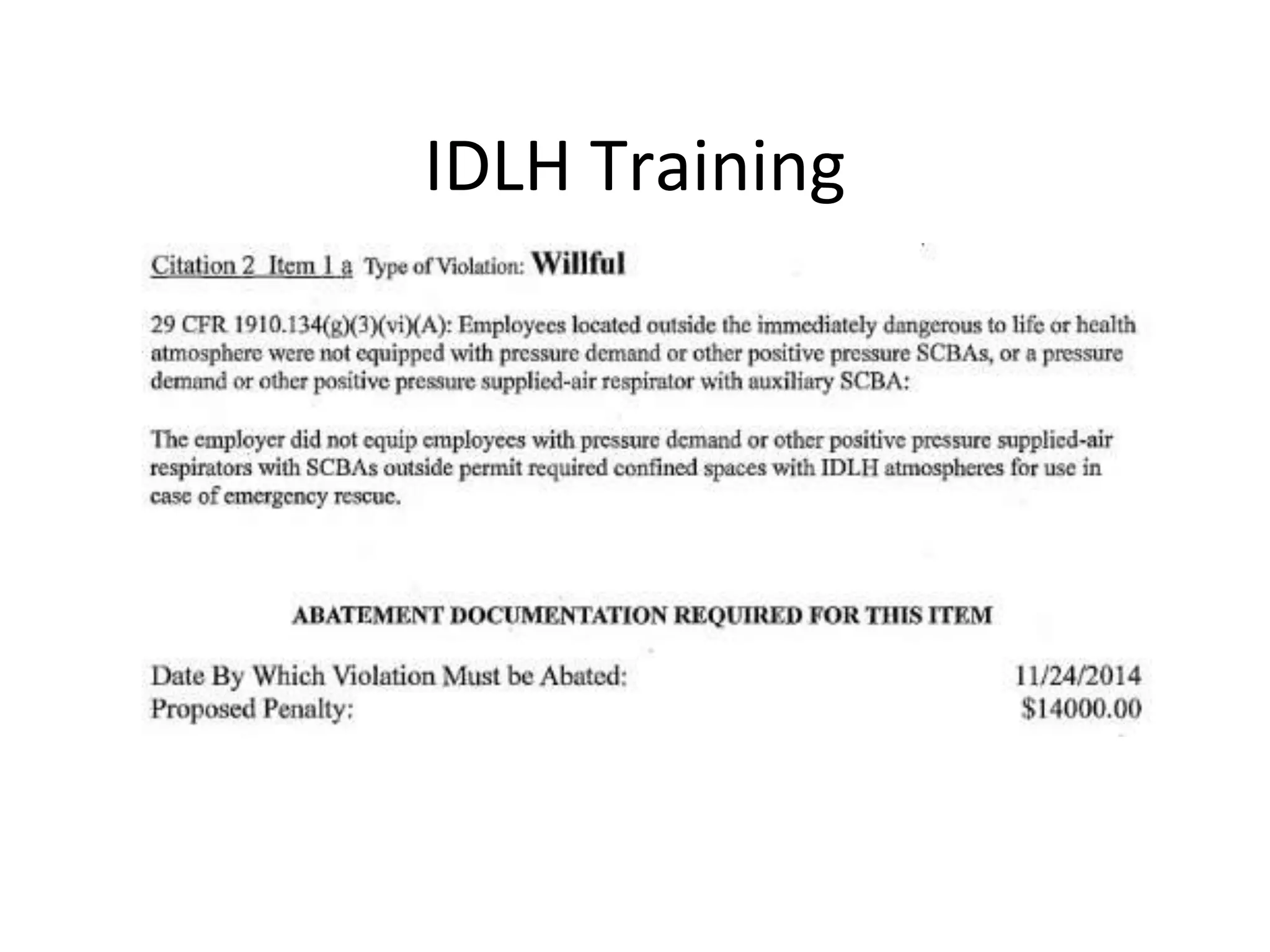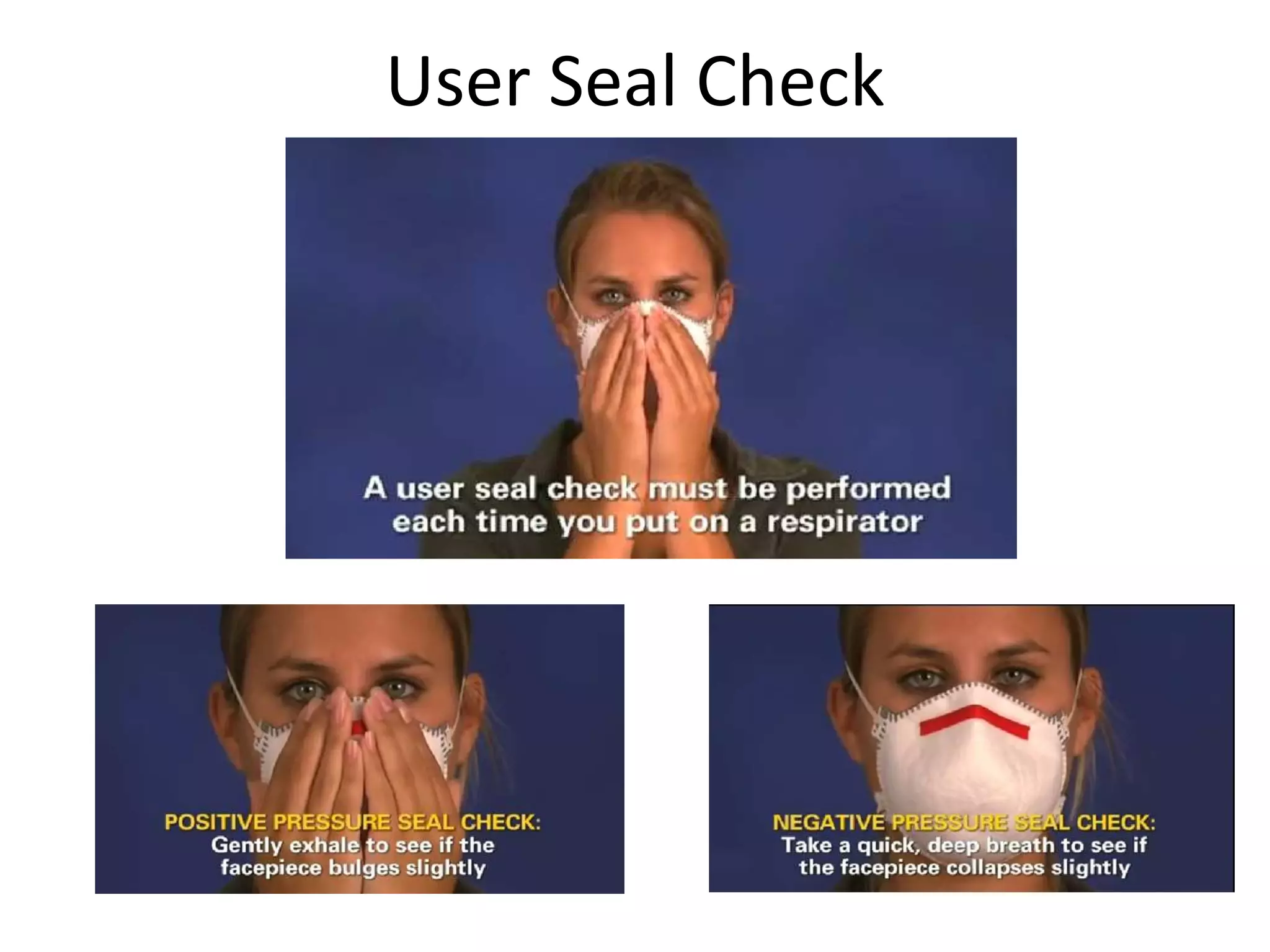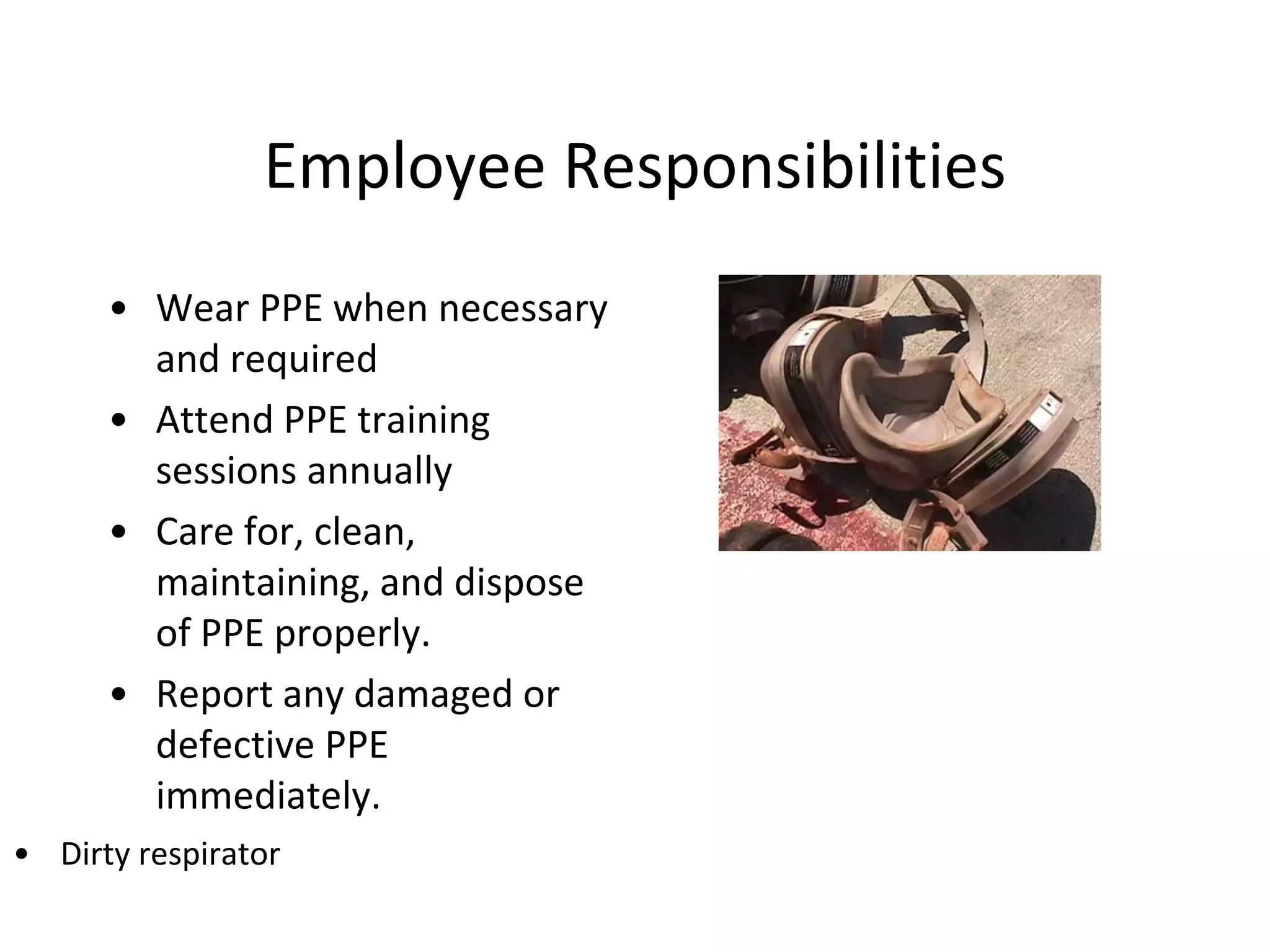The document discusses respiratory protection standards and regulations, including definitions of respirator types, medical evaluation requirements, and hazard examples like silica, asbestos, and lead that require respiratory protection. It also provides case studies on improper asbestos removal and highlights Cal/OSHA's advisory on providing respirators to outdoor workers during wildfire smoke events.
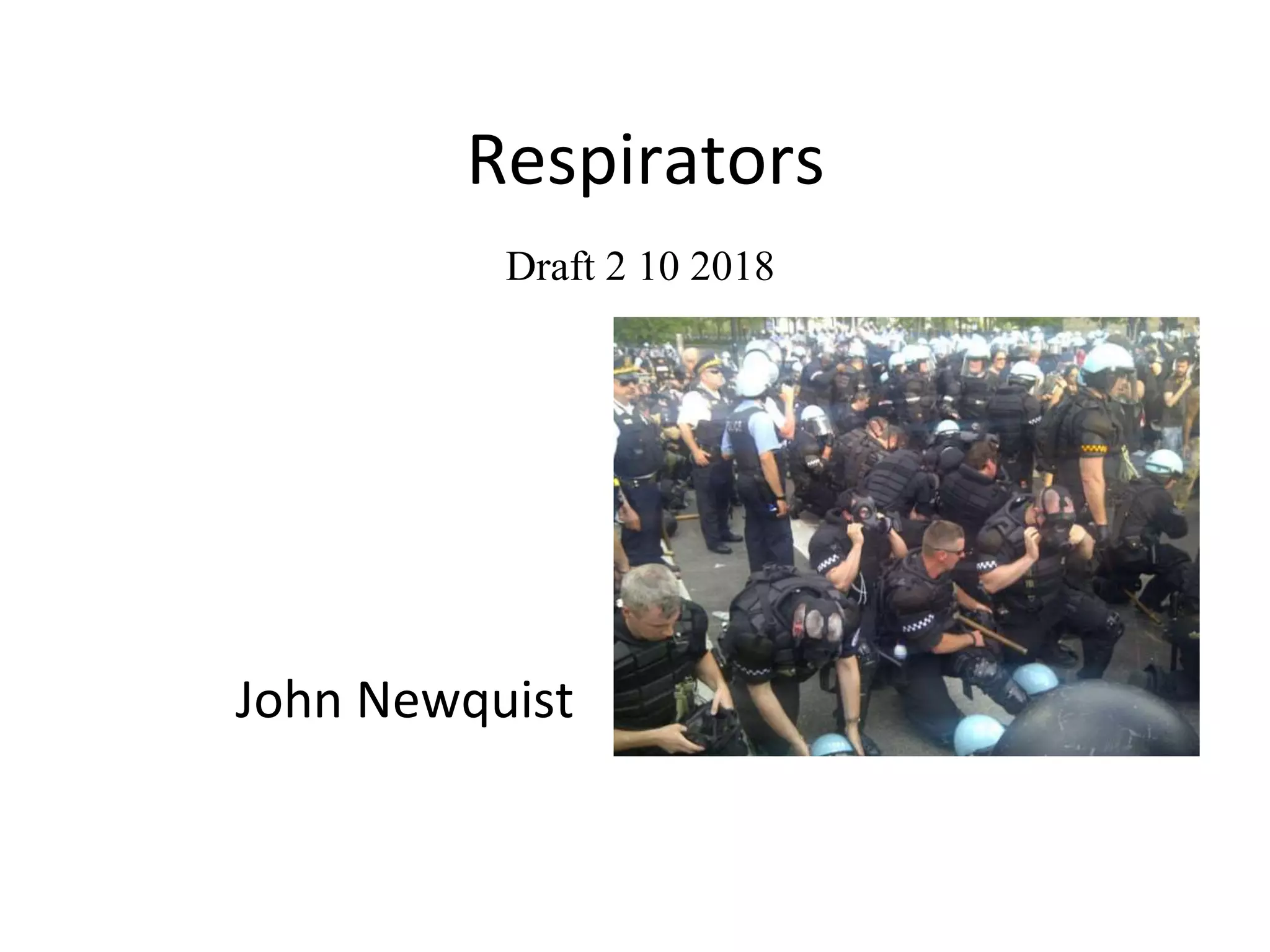
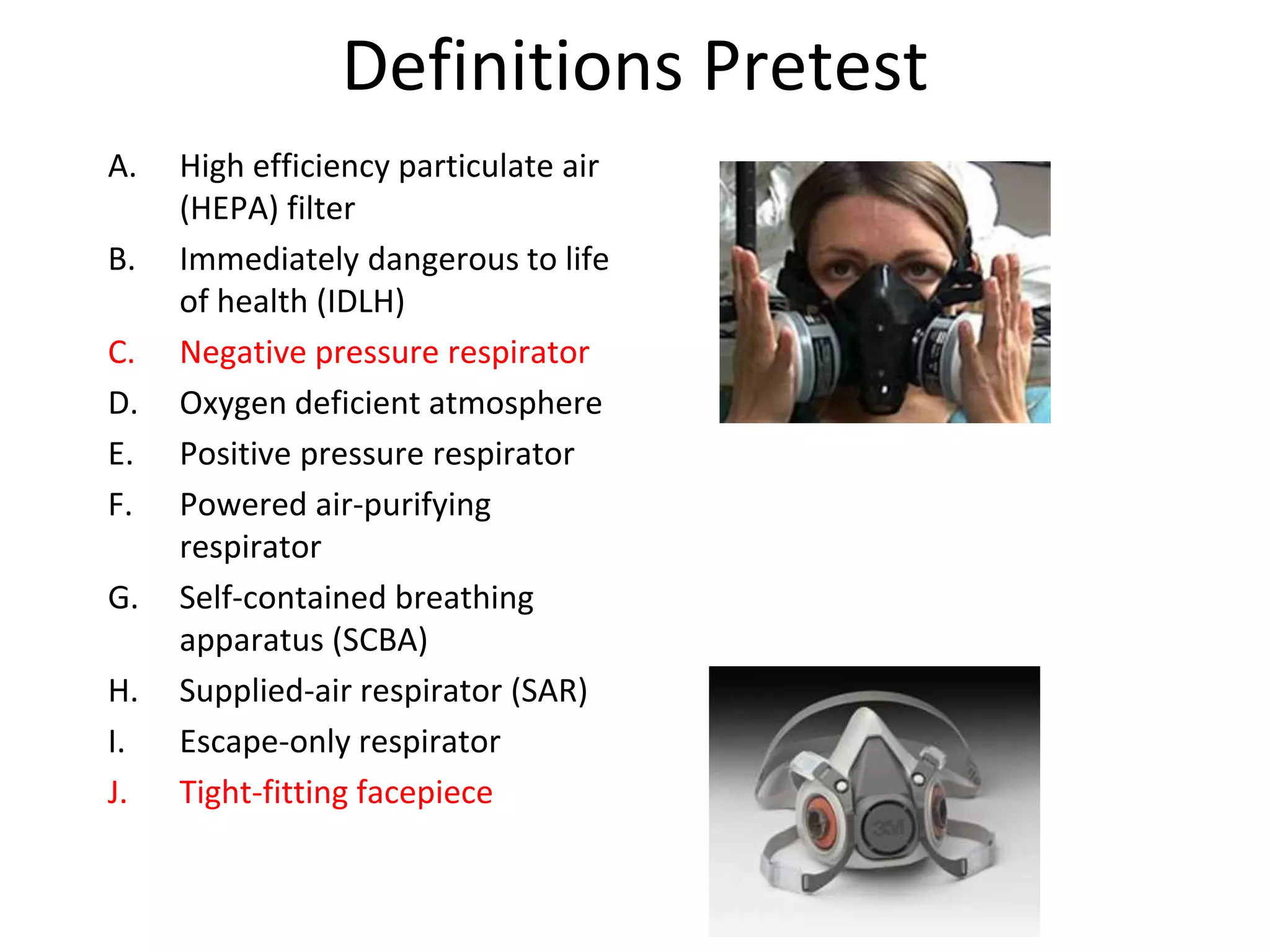
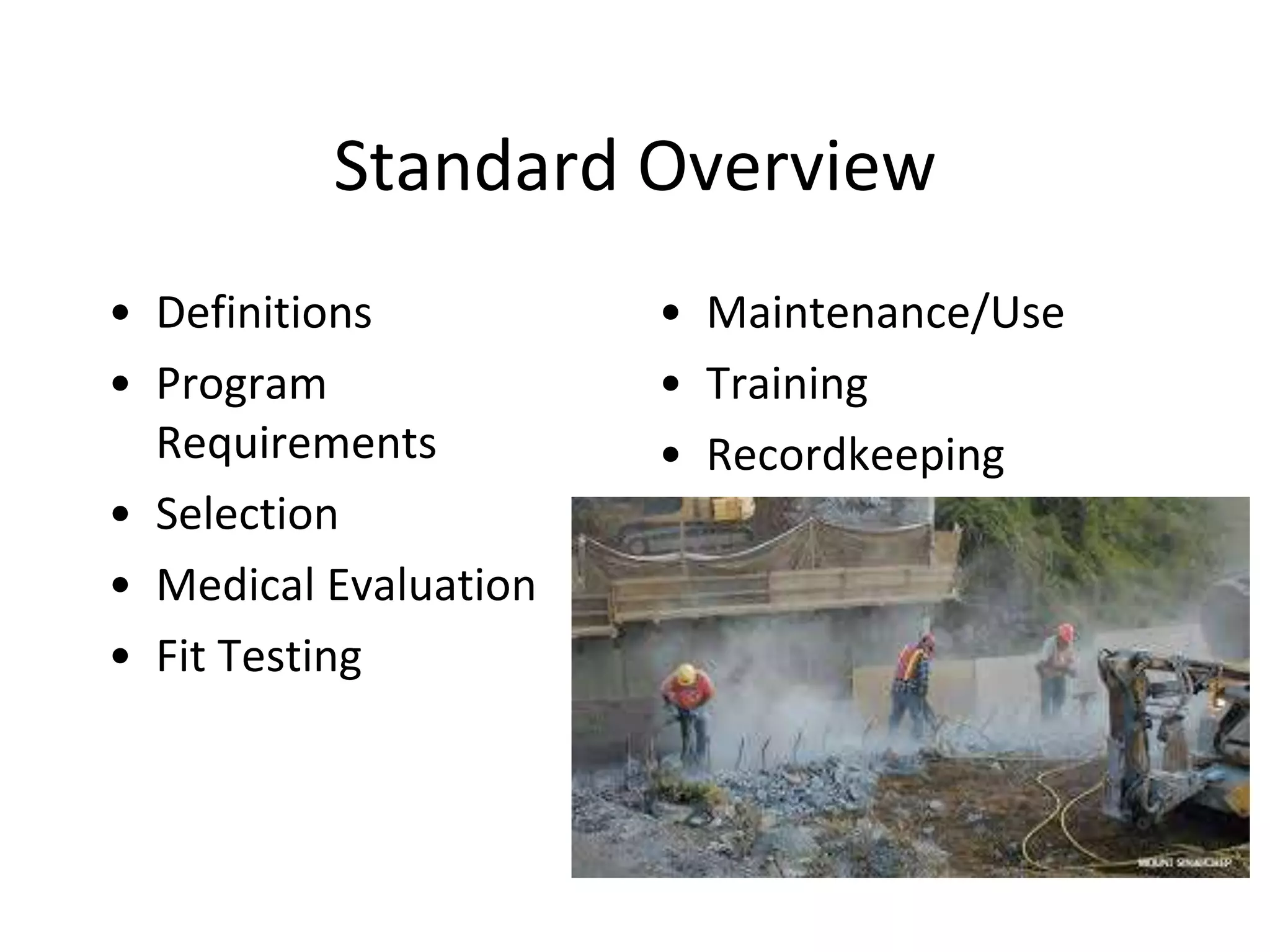
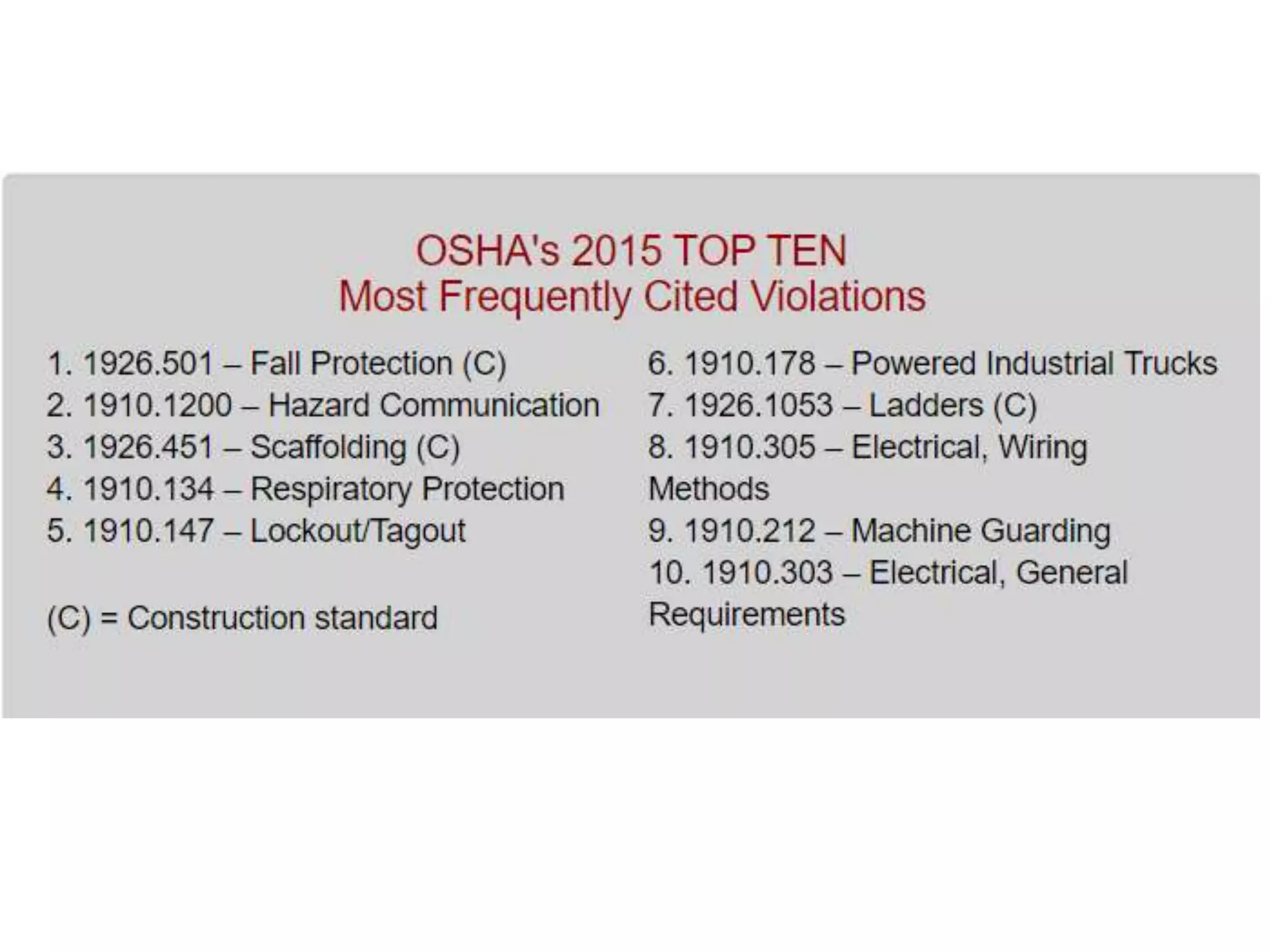

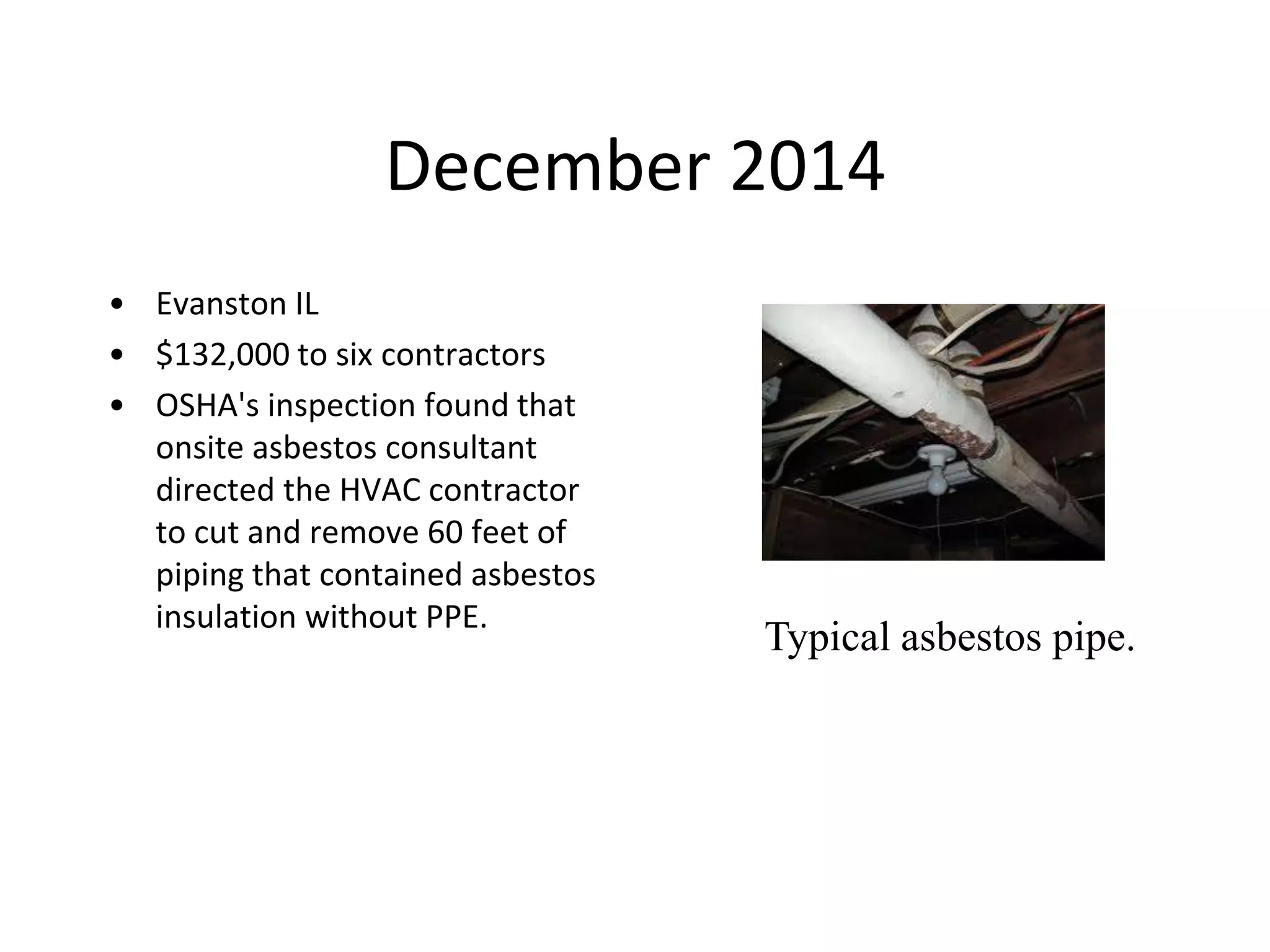




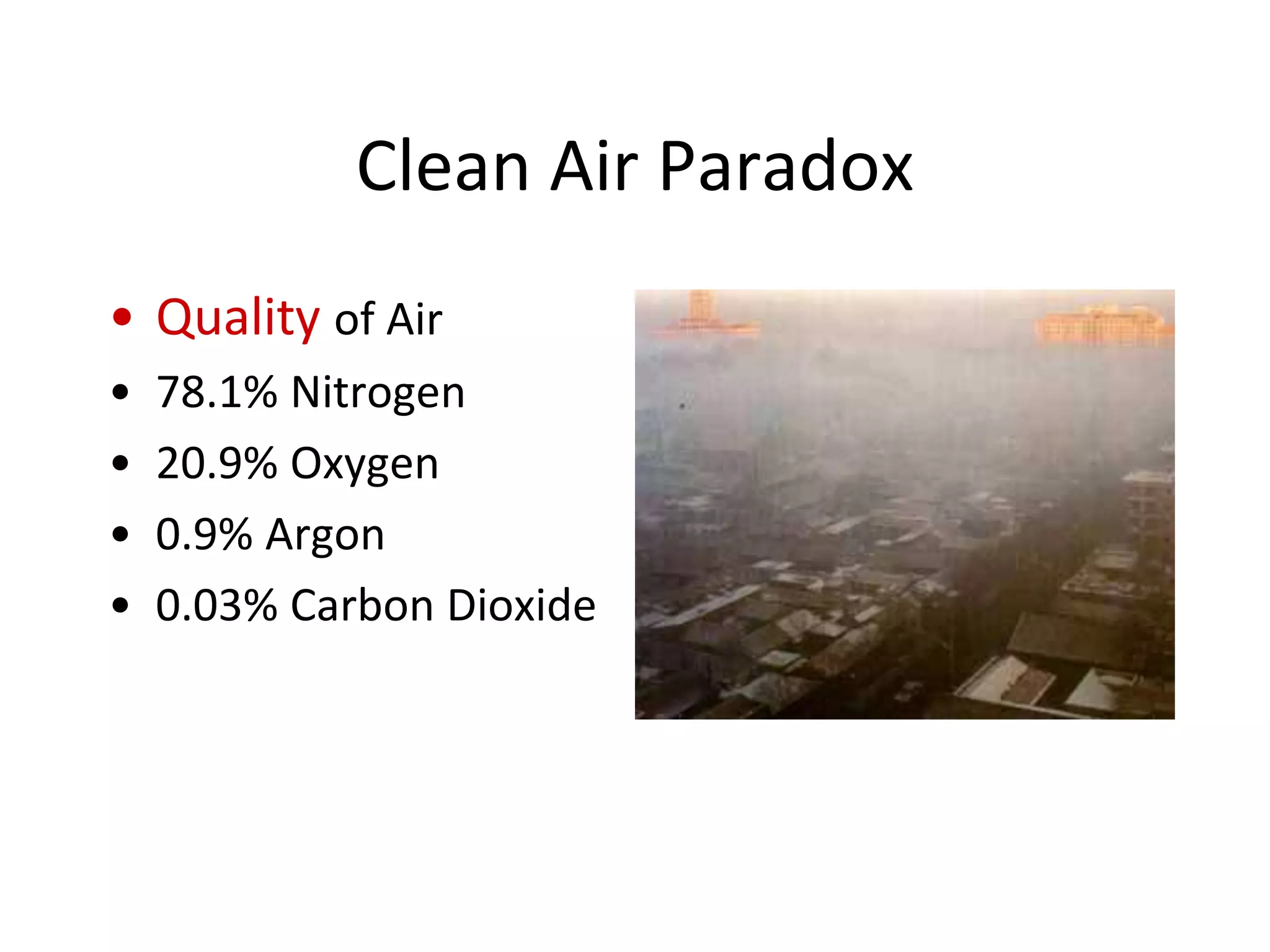
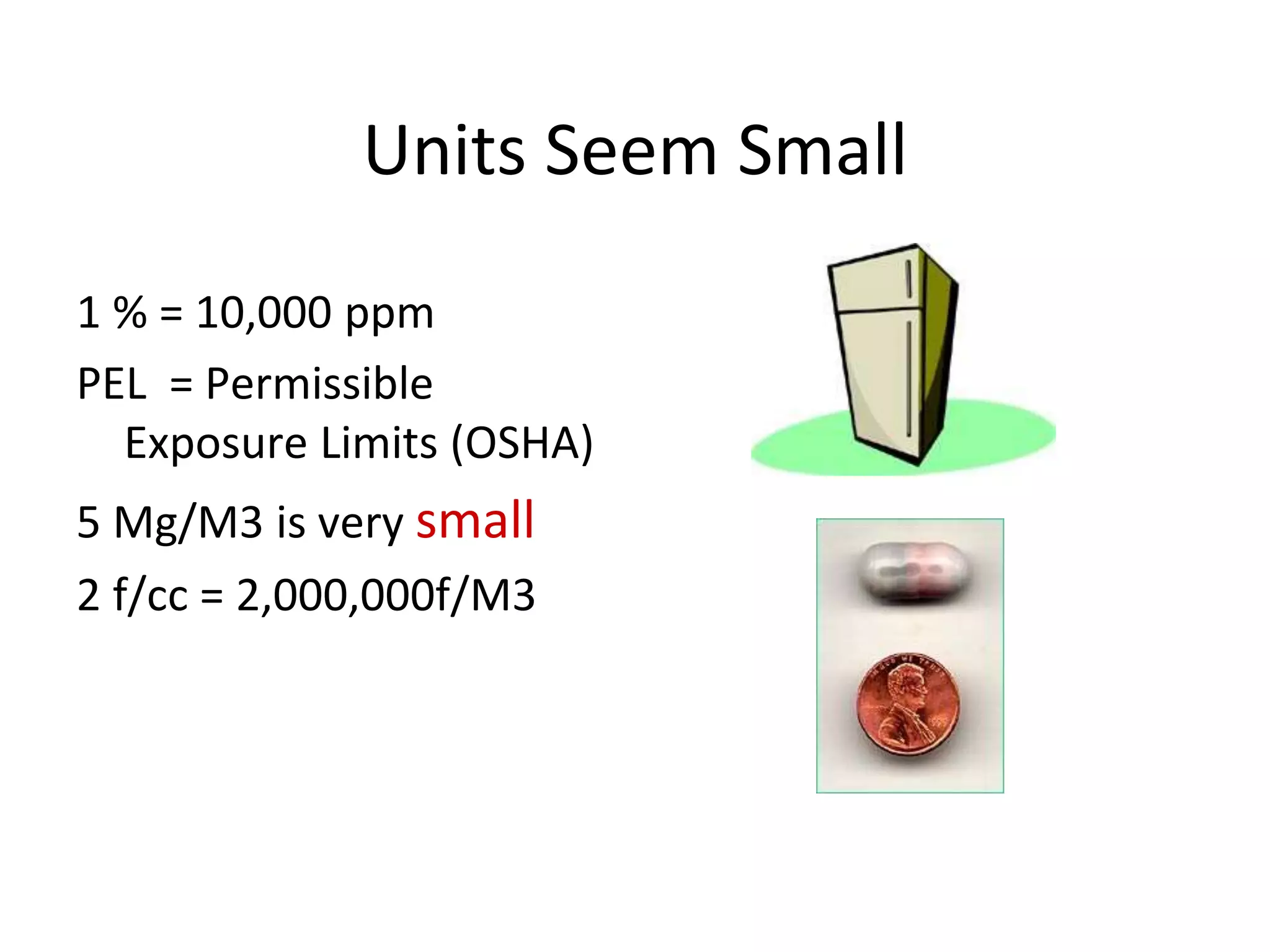






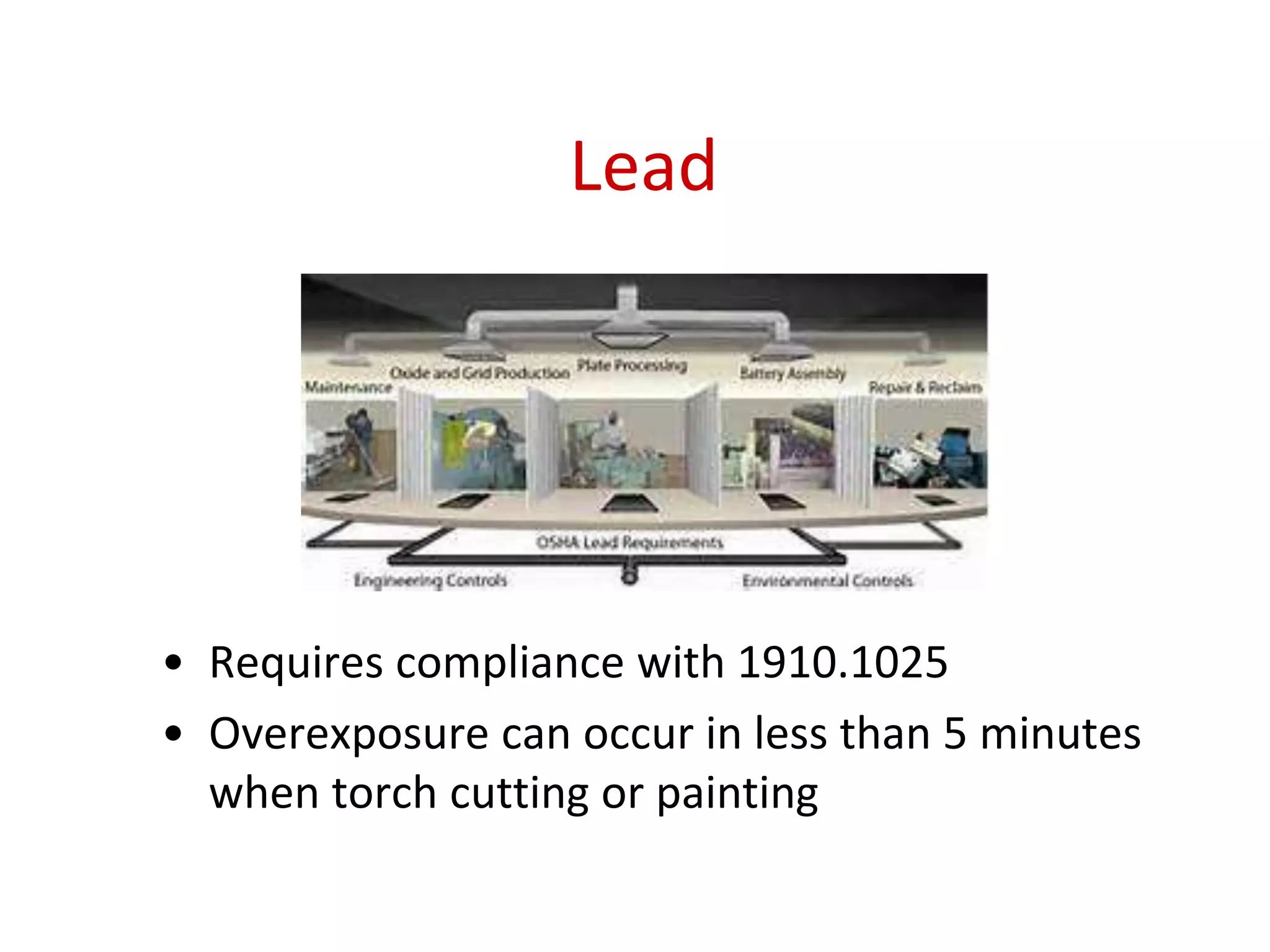

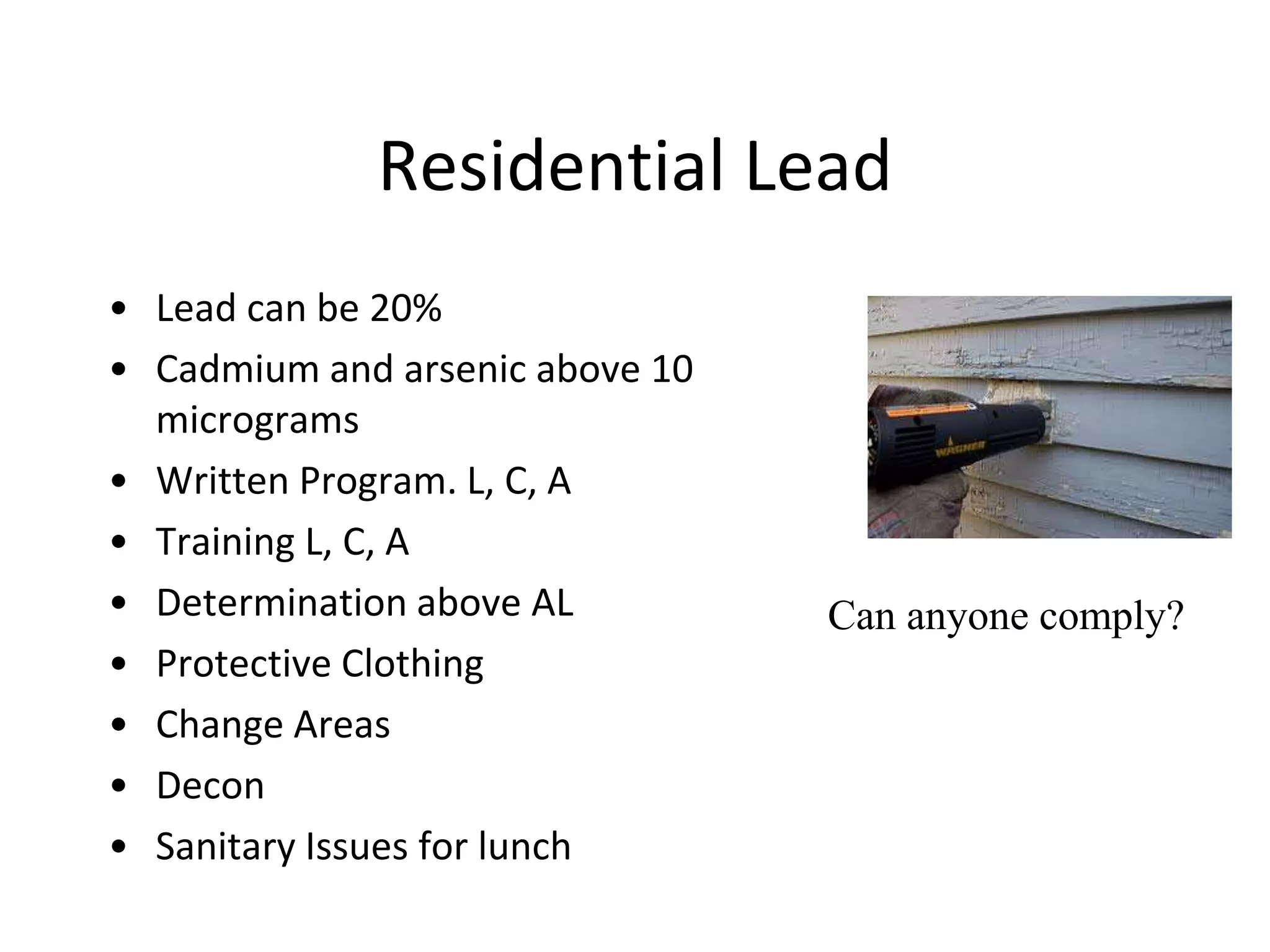





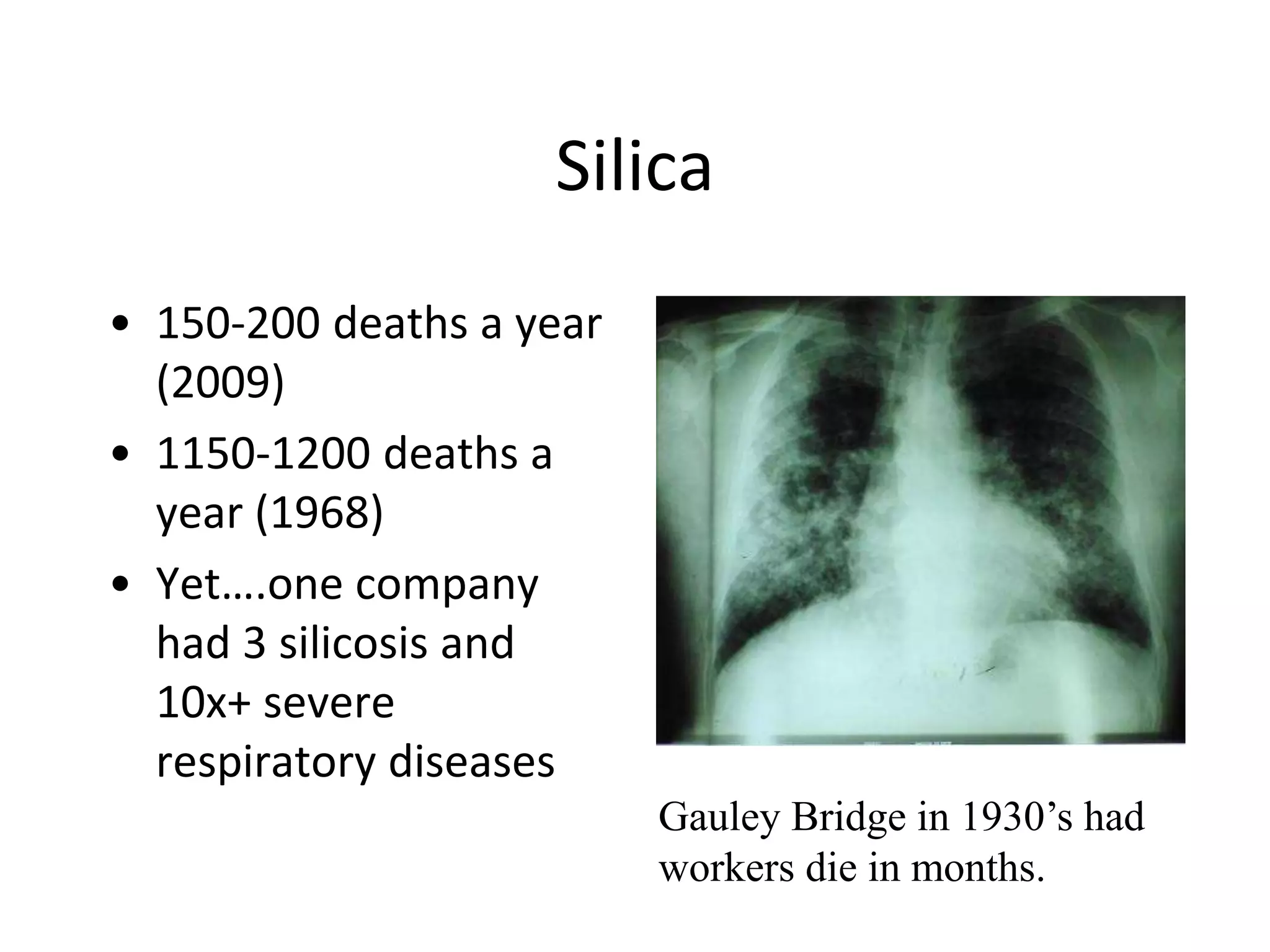




![Carbon Monoxide
• 11/8/1991
• A couple and their eight
children were found dead
late today, their bodies
scattered throughout
their small house on the
city's Southwest Side.
• The police said it
appeared that the family
died of carbon monoxide
poisoning.
• "Apparently a spot weld in a
flue pipe gave way, leaving a
three-inch gap [ that ] caused
byproducts of combustion,
including carbon monoxide, to
recirculate throughout the
home.“
• A neighbor said he saw
repairmen working at the
house last week](https://image.slidesharecdn.com/respirators2018-180213223450/75/Respirators-2018-32-2048.jpg)

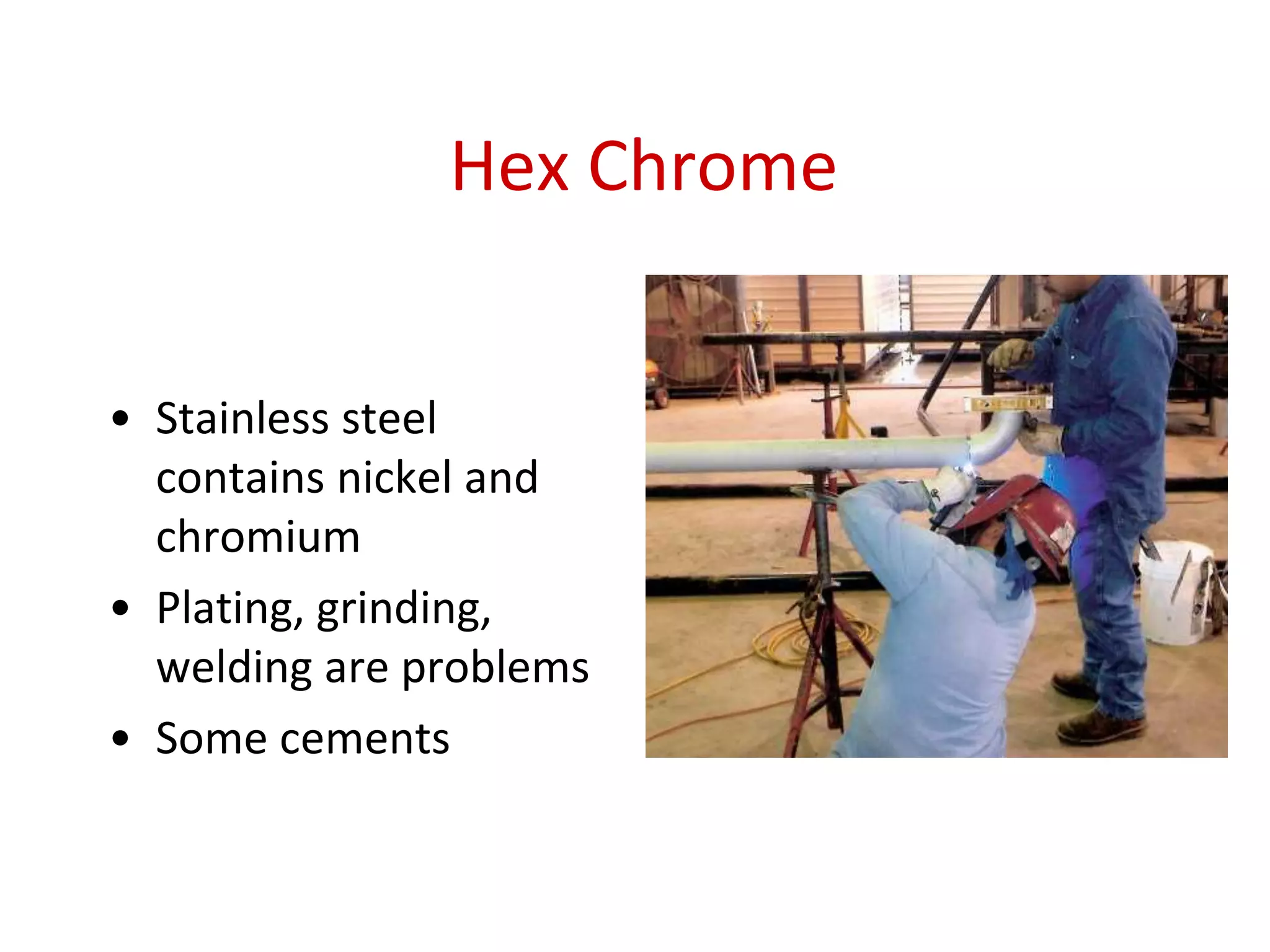


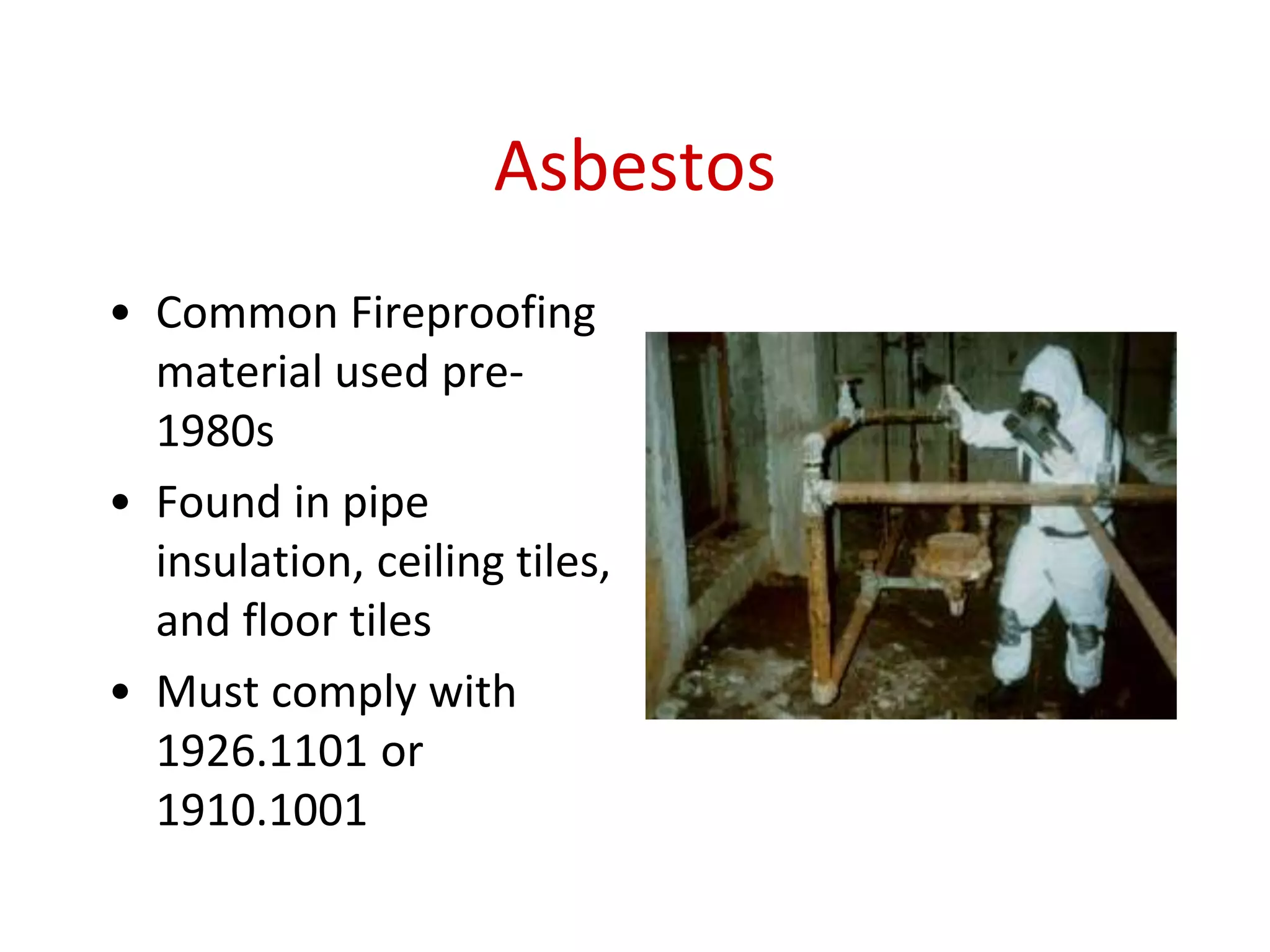




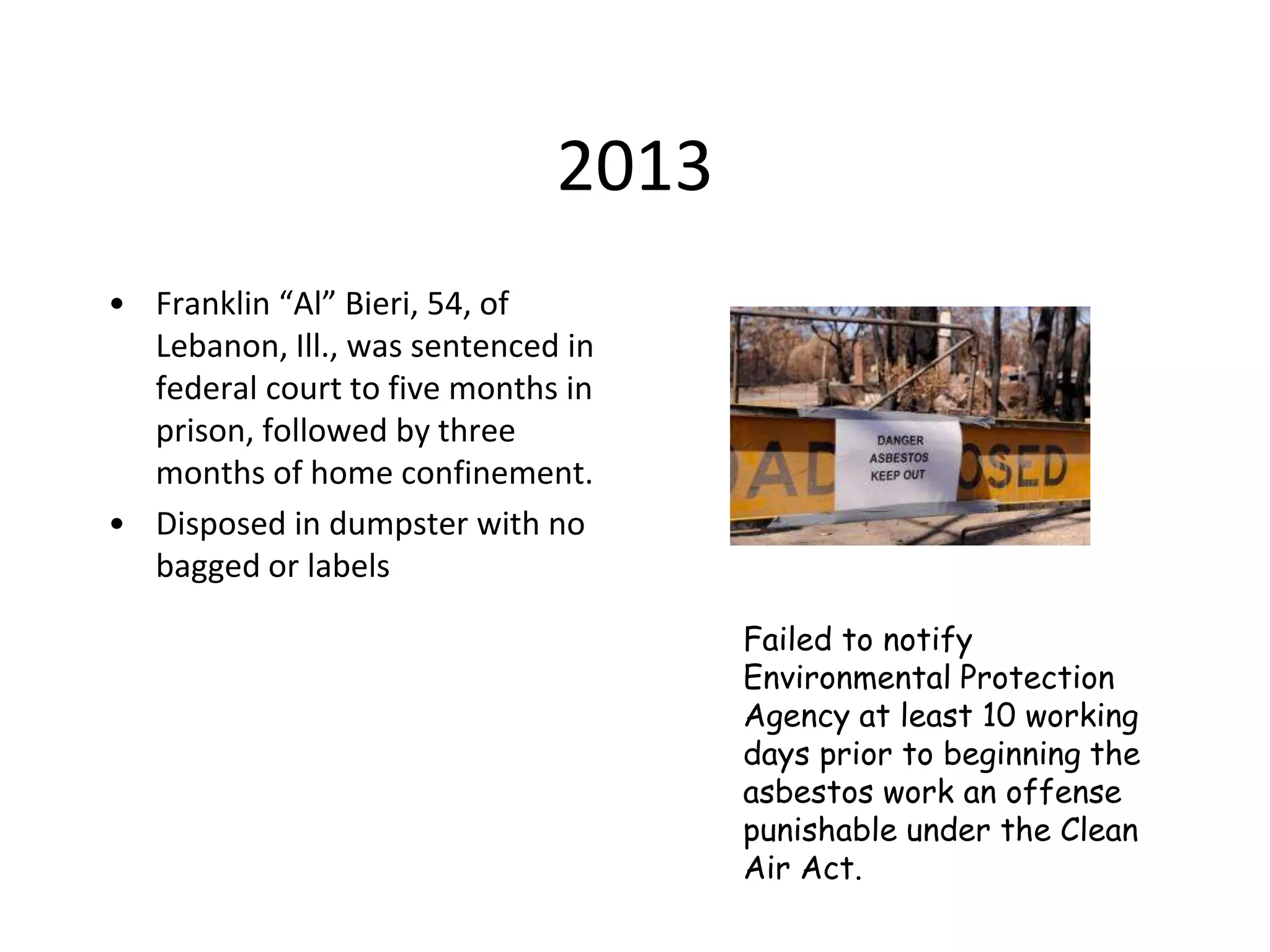



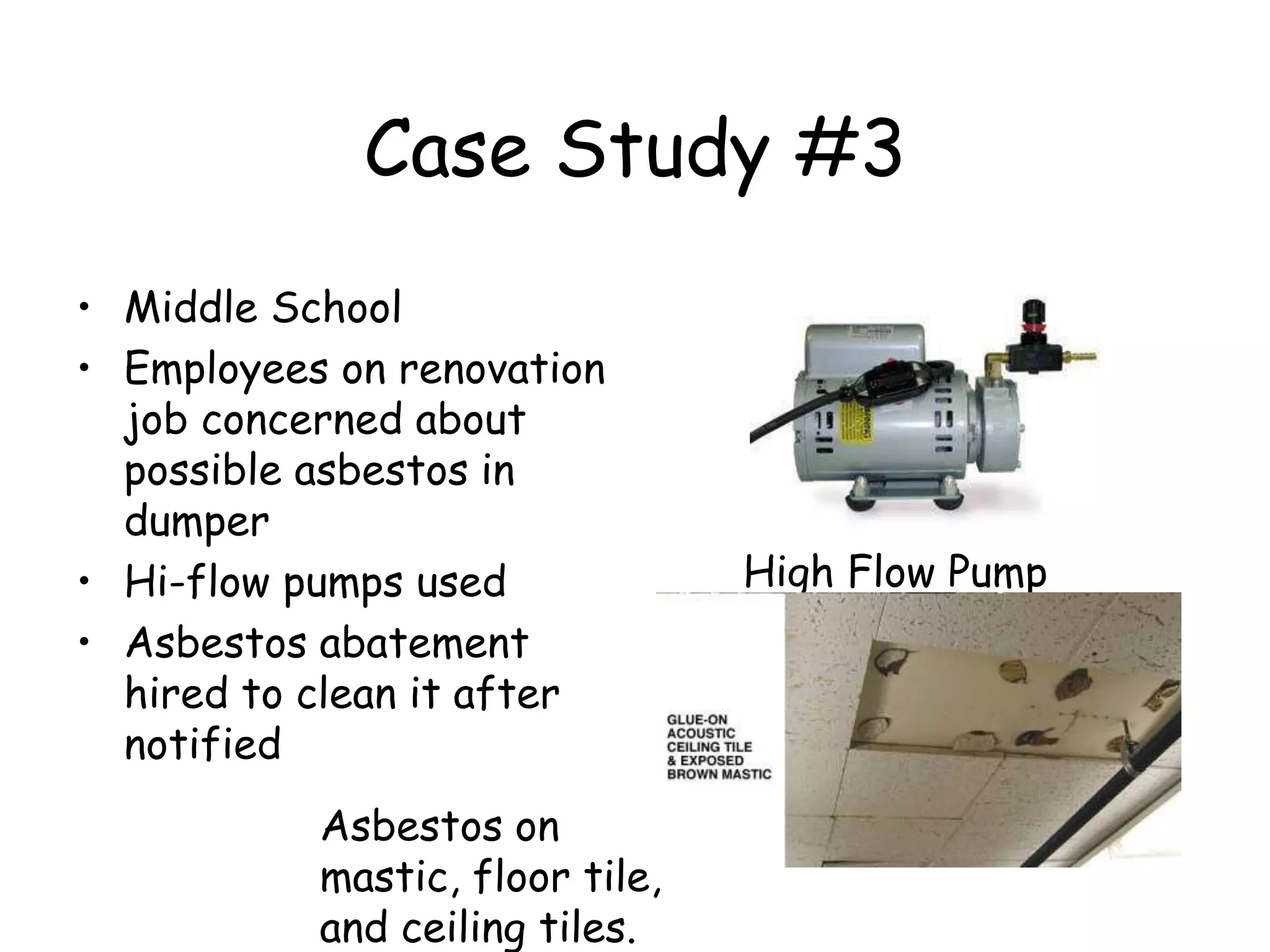

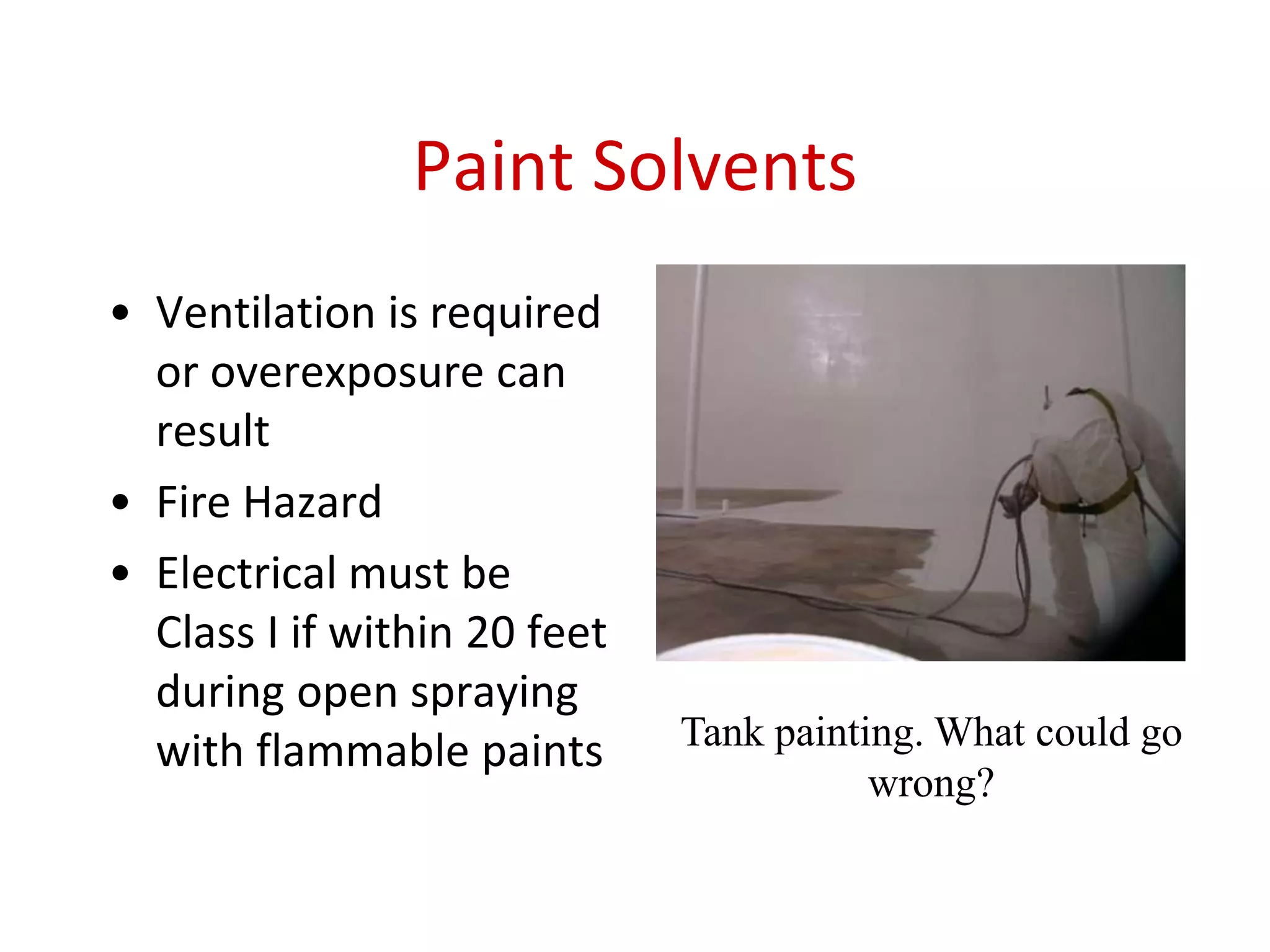




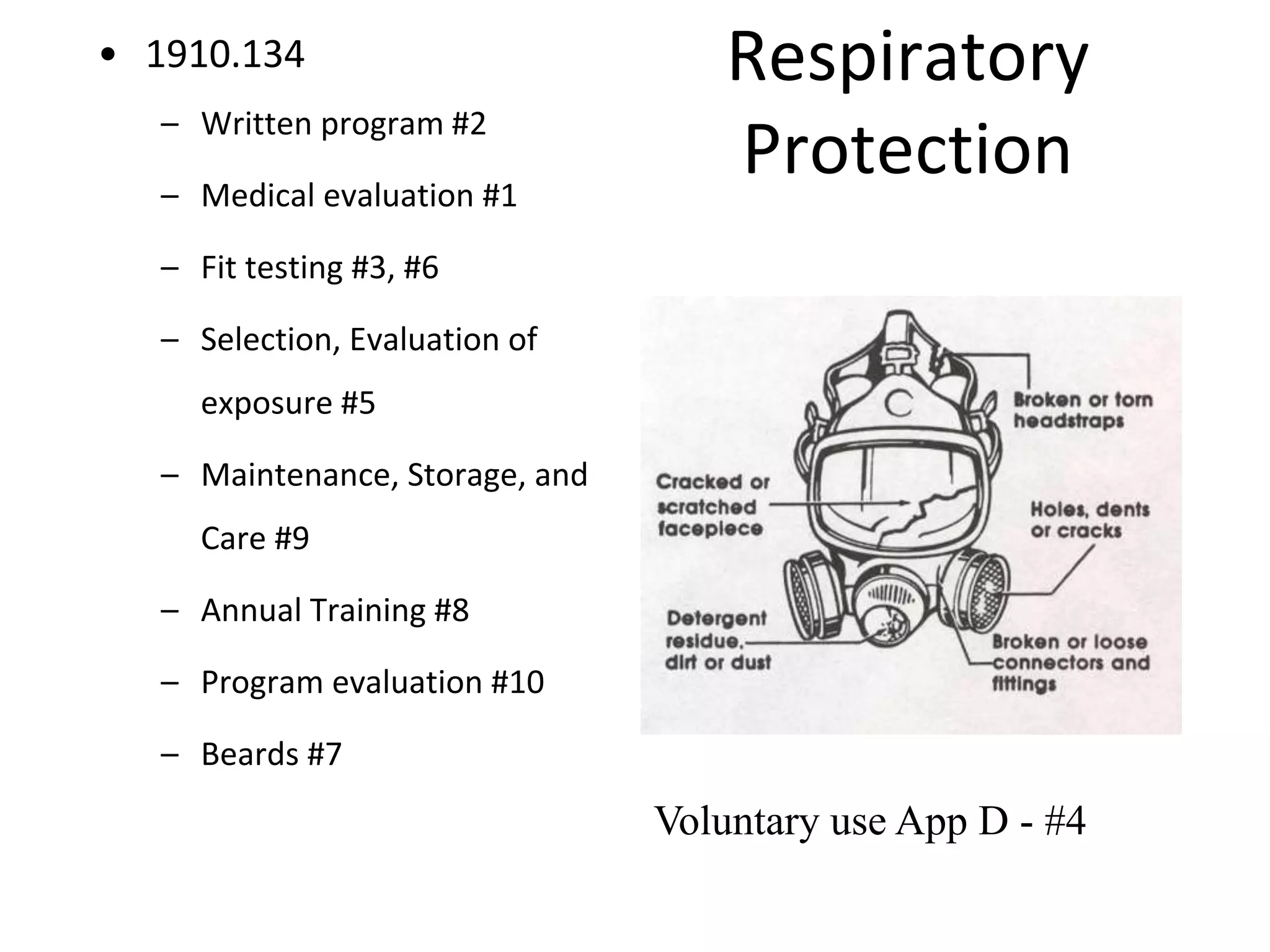


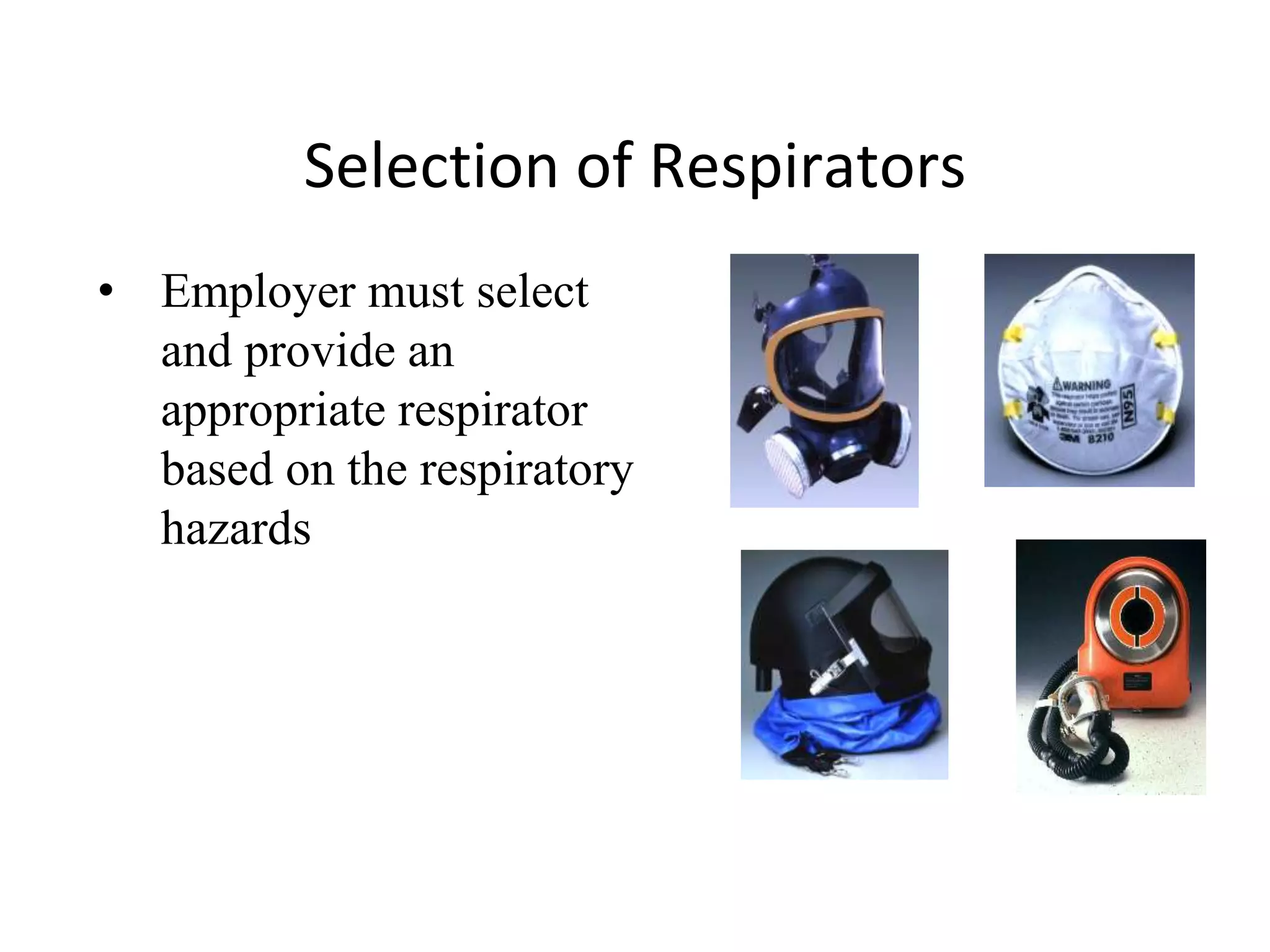



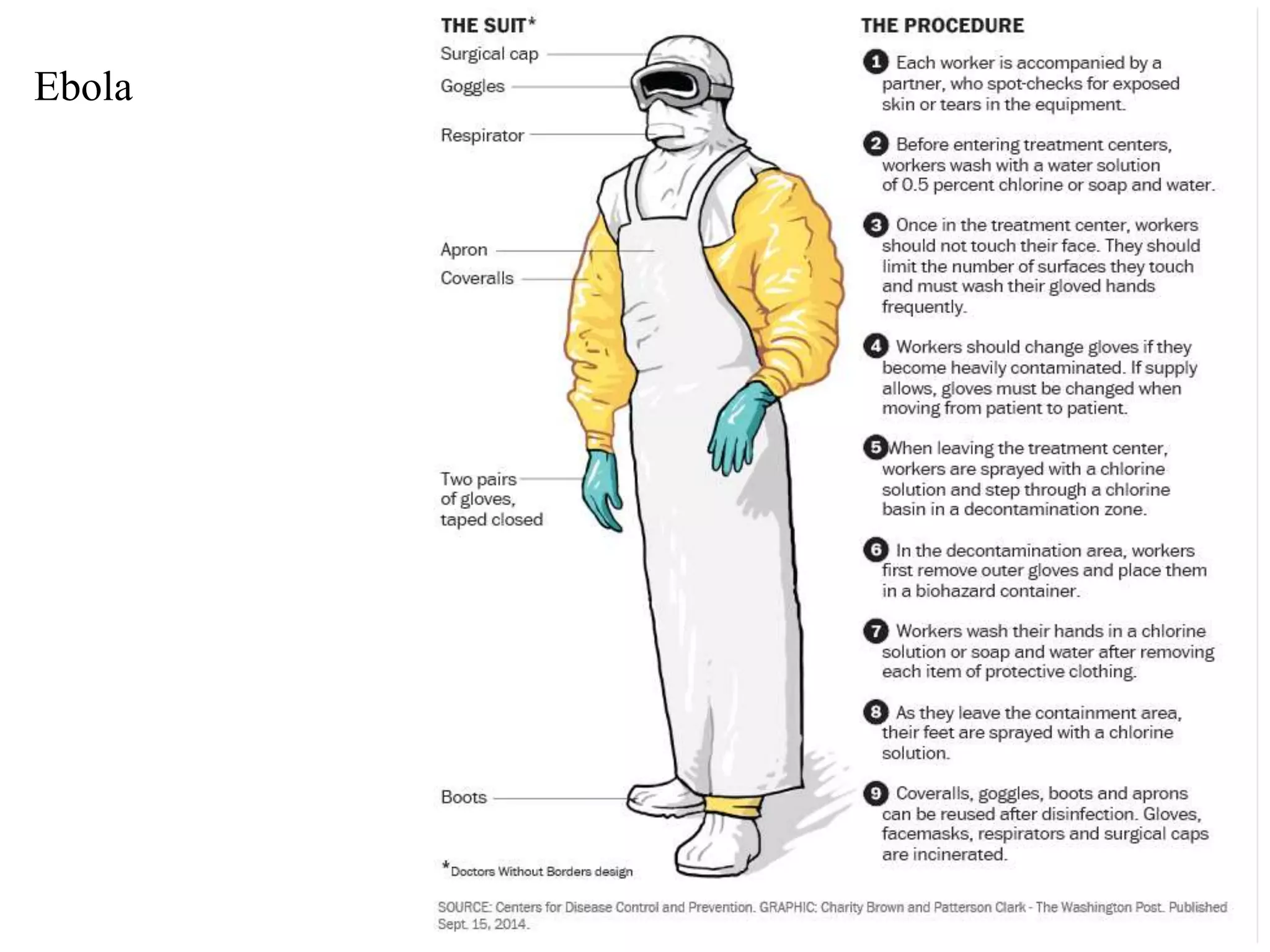

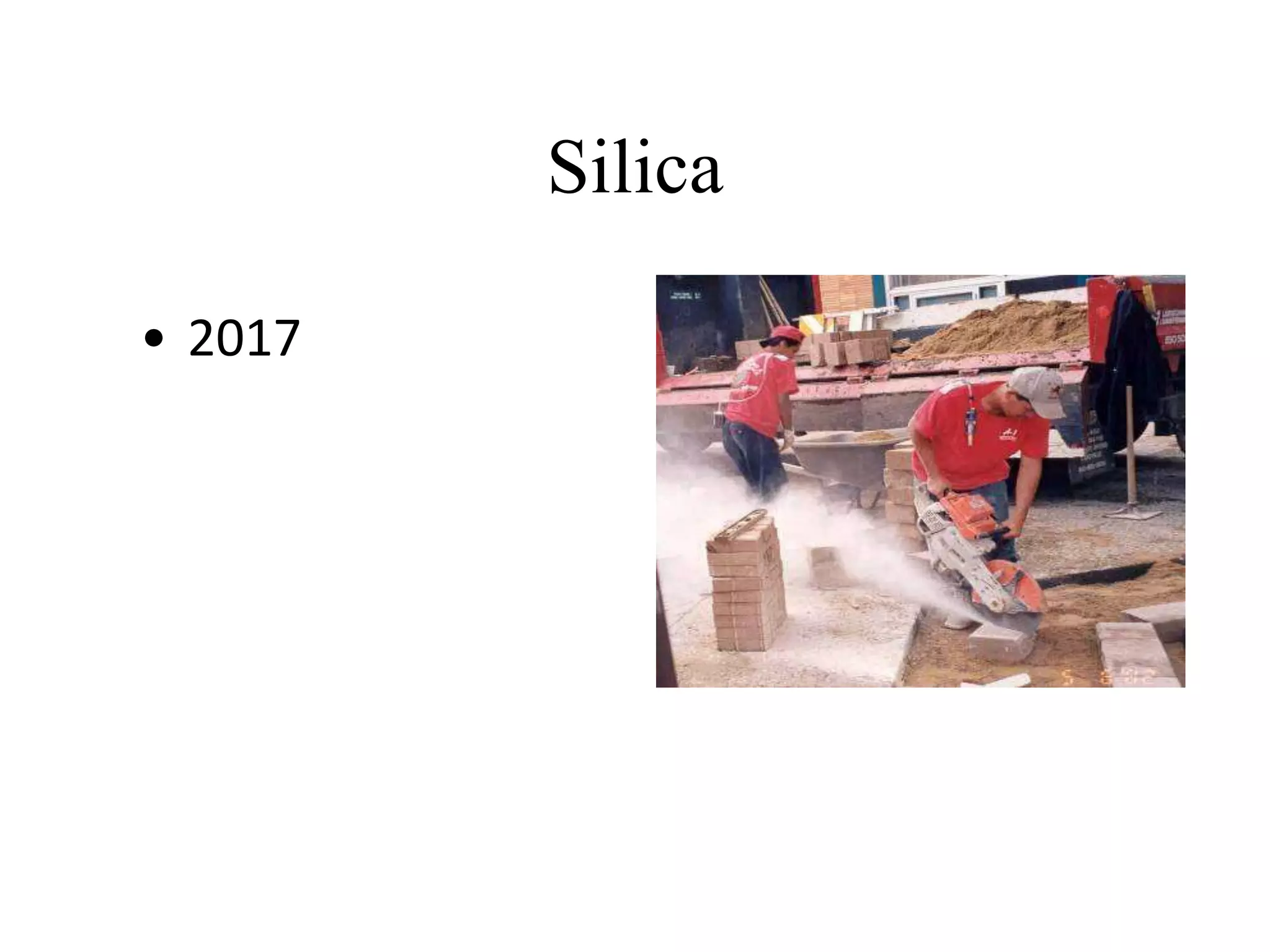
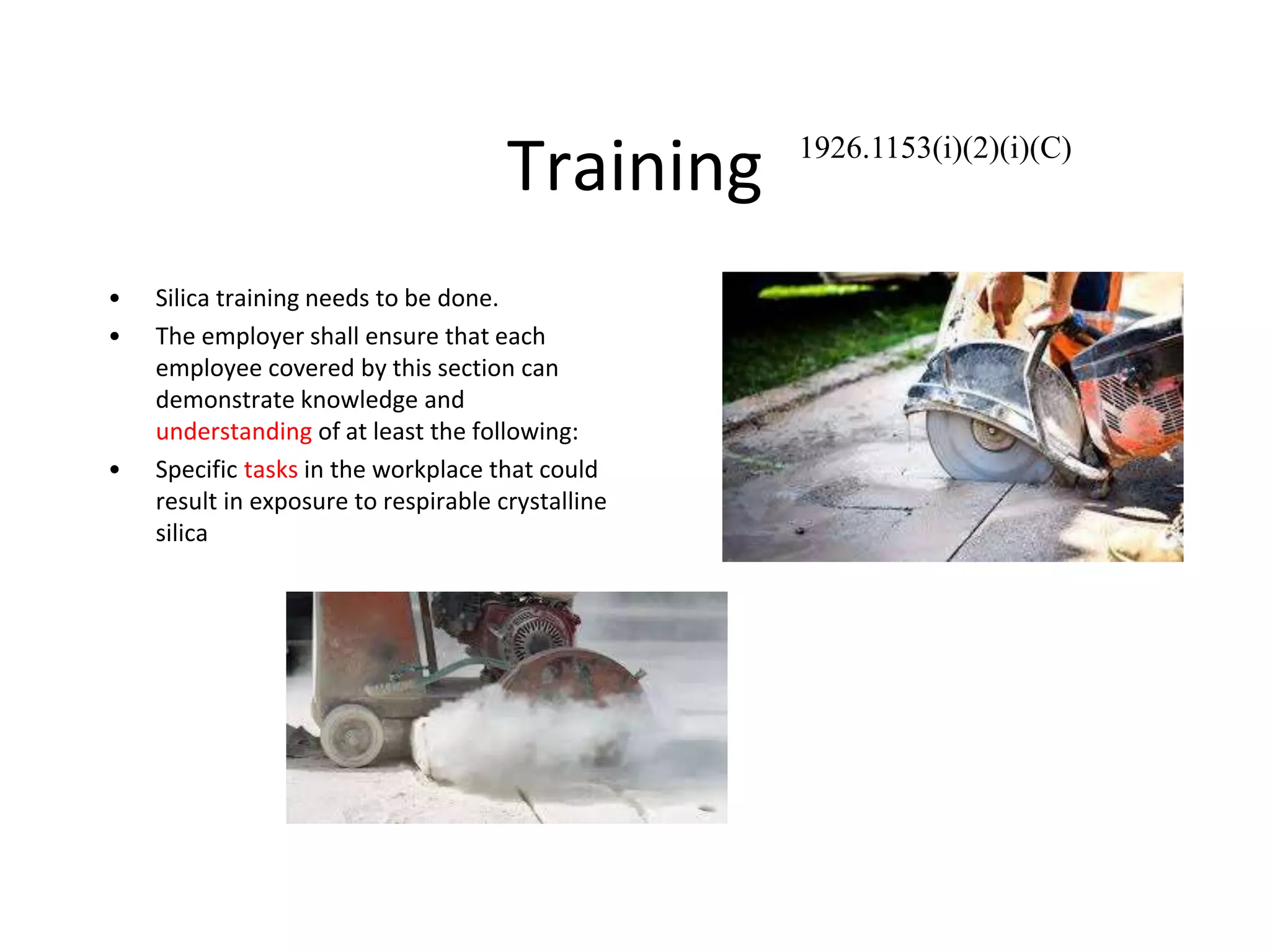
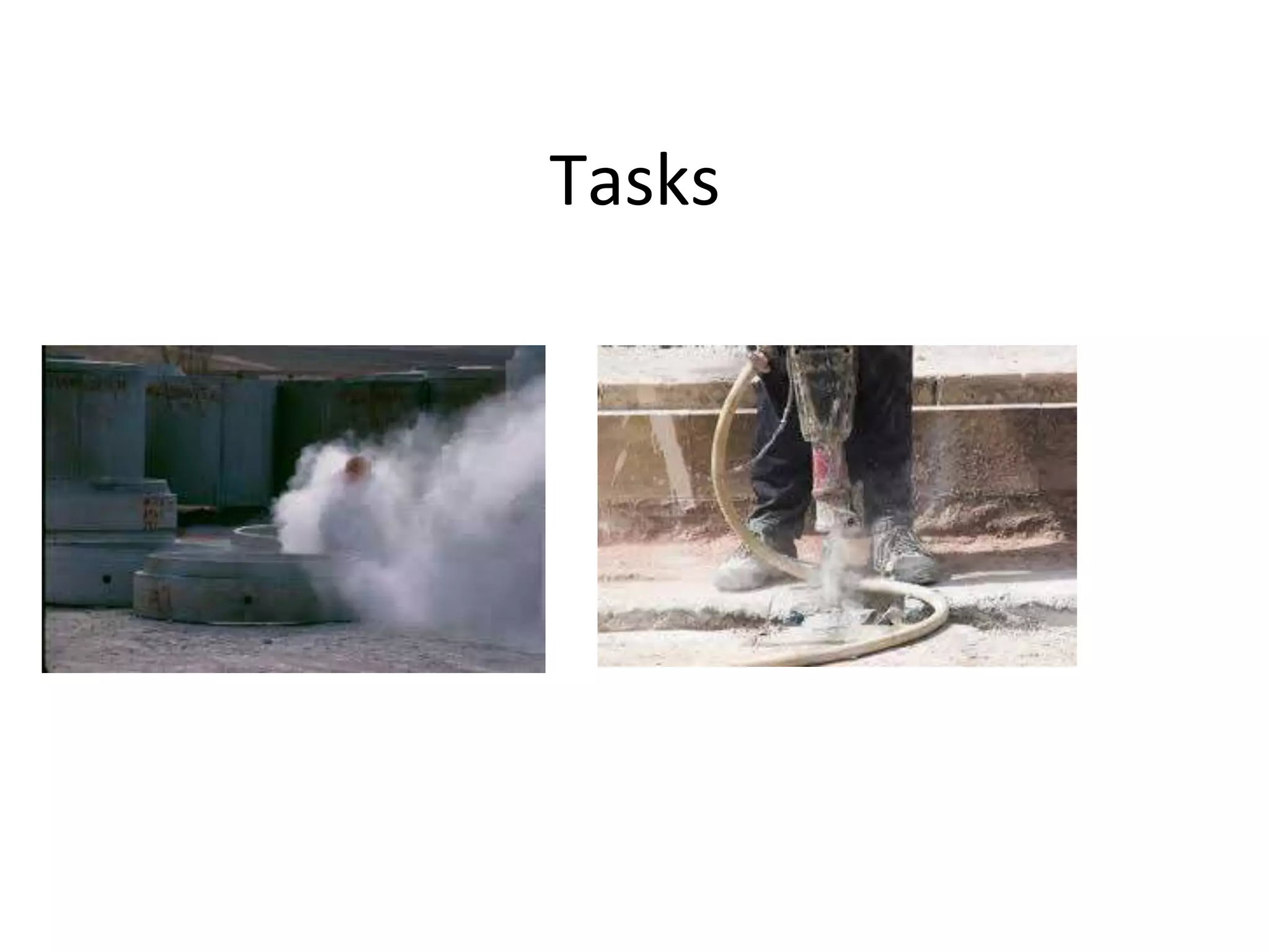
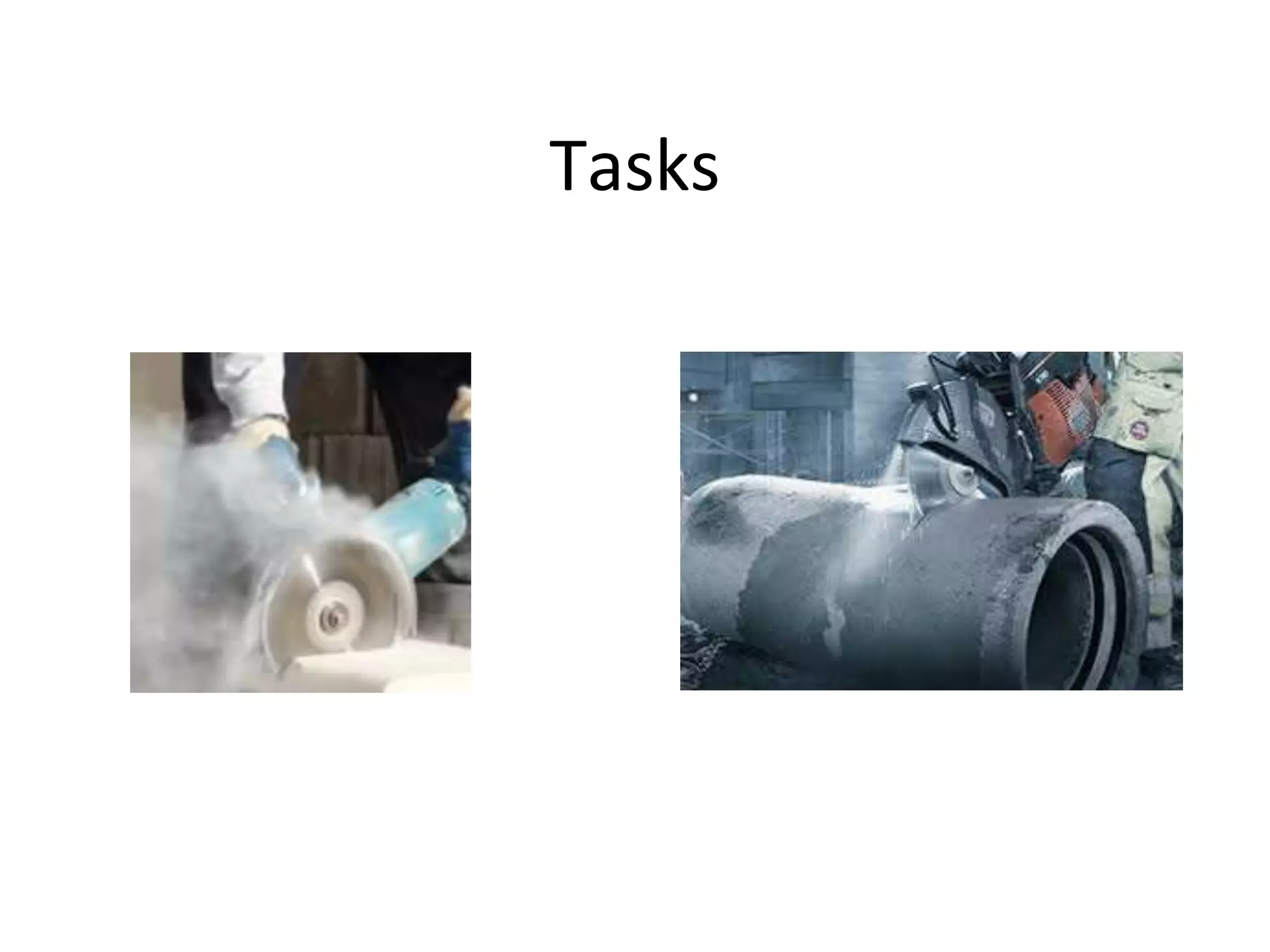


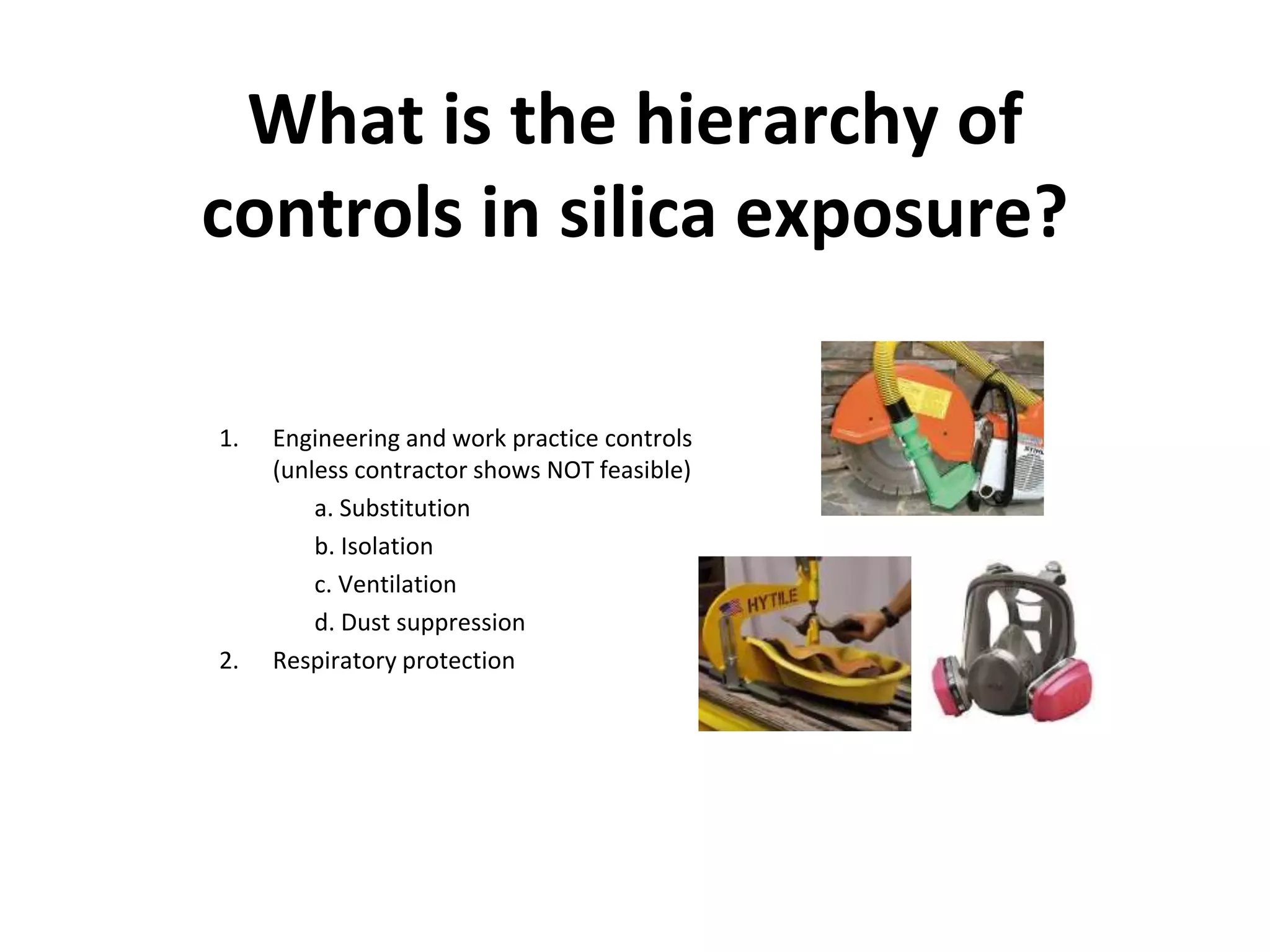

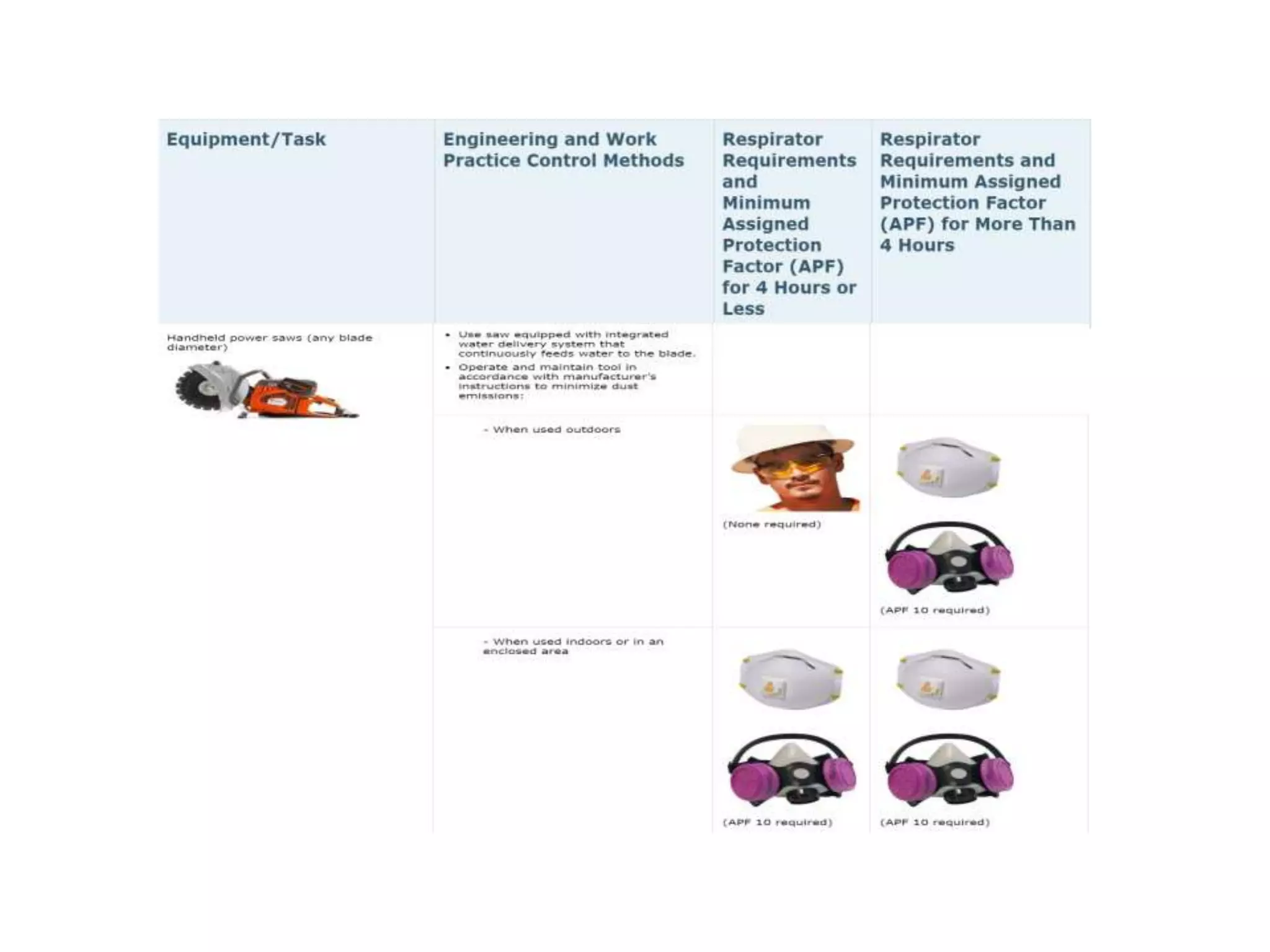

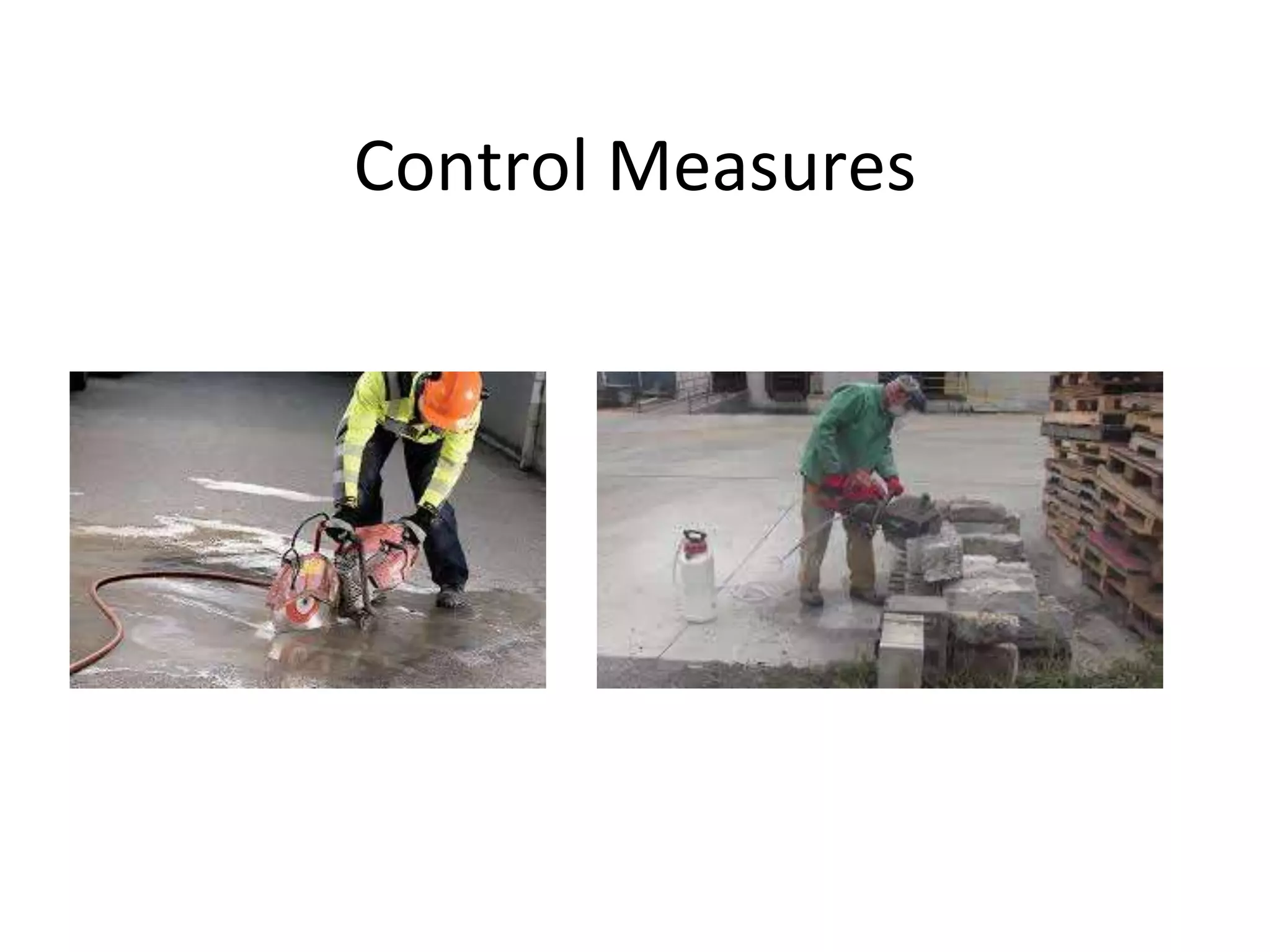

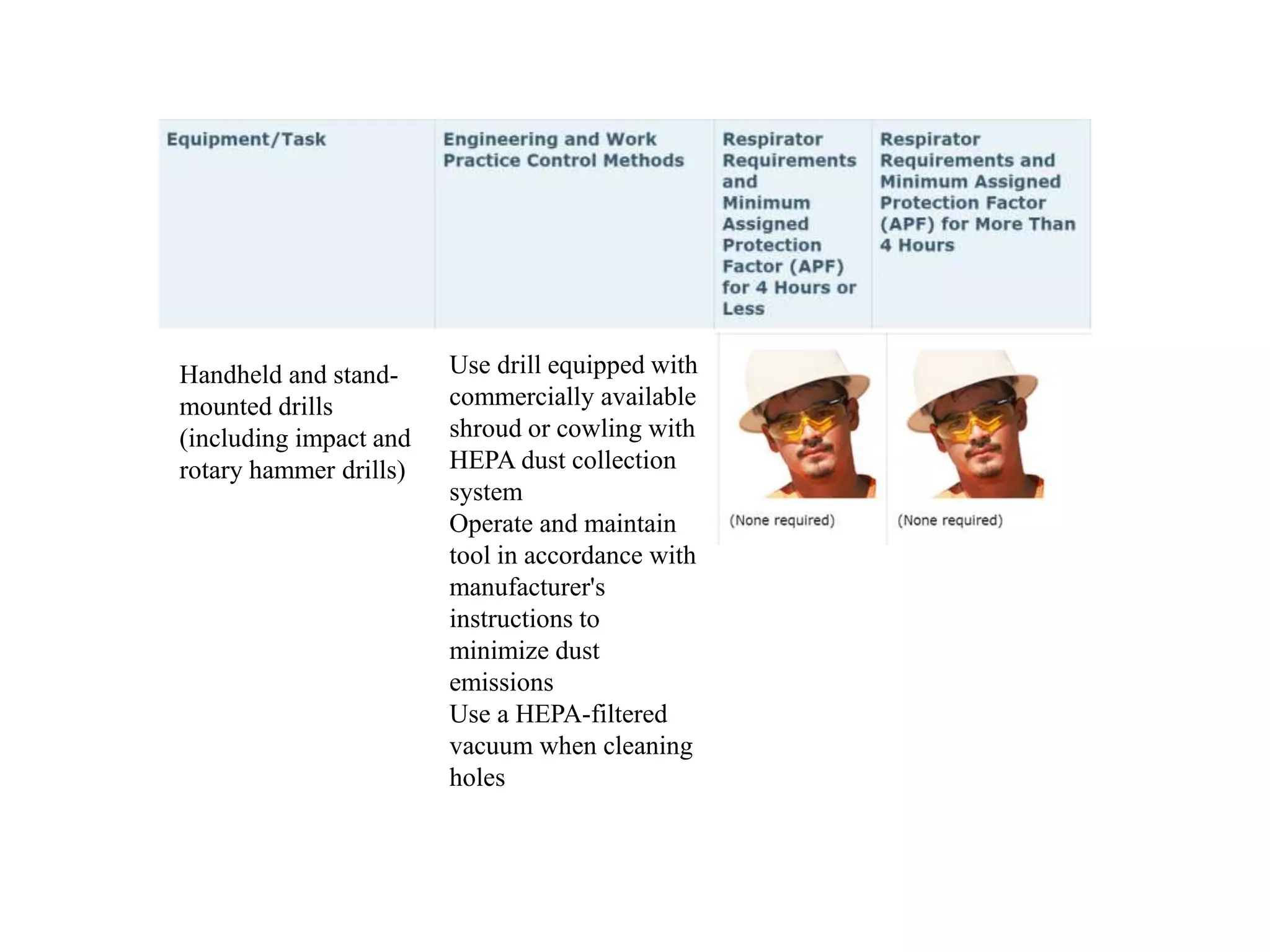





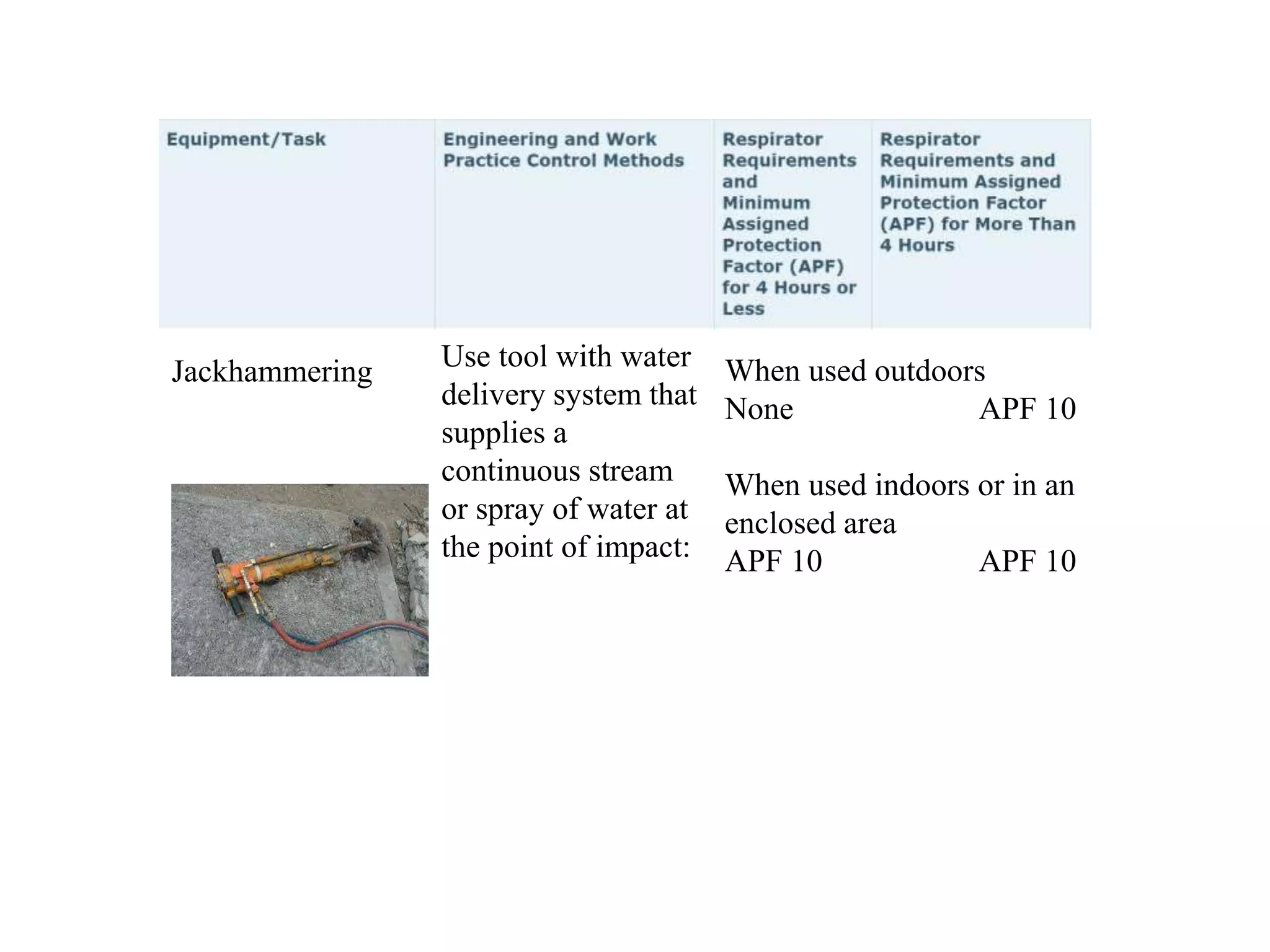




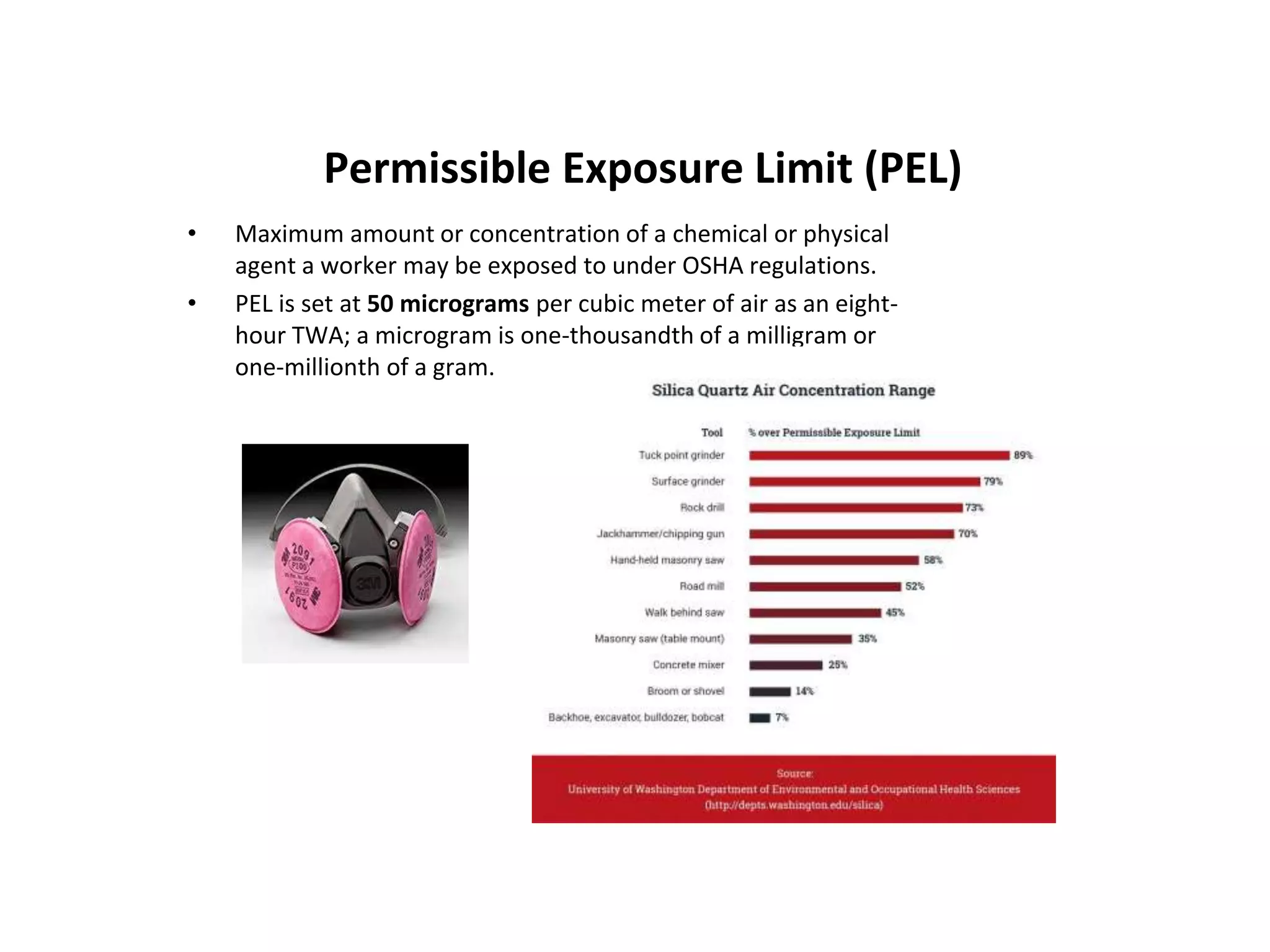


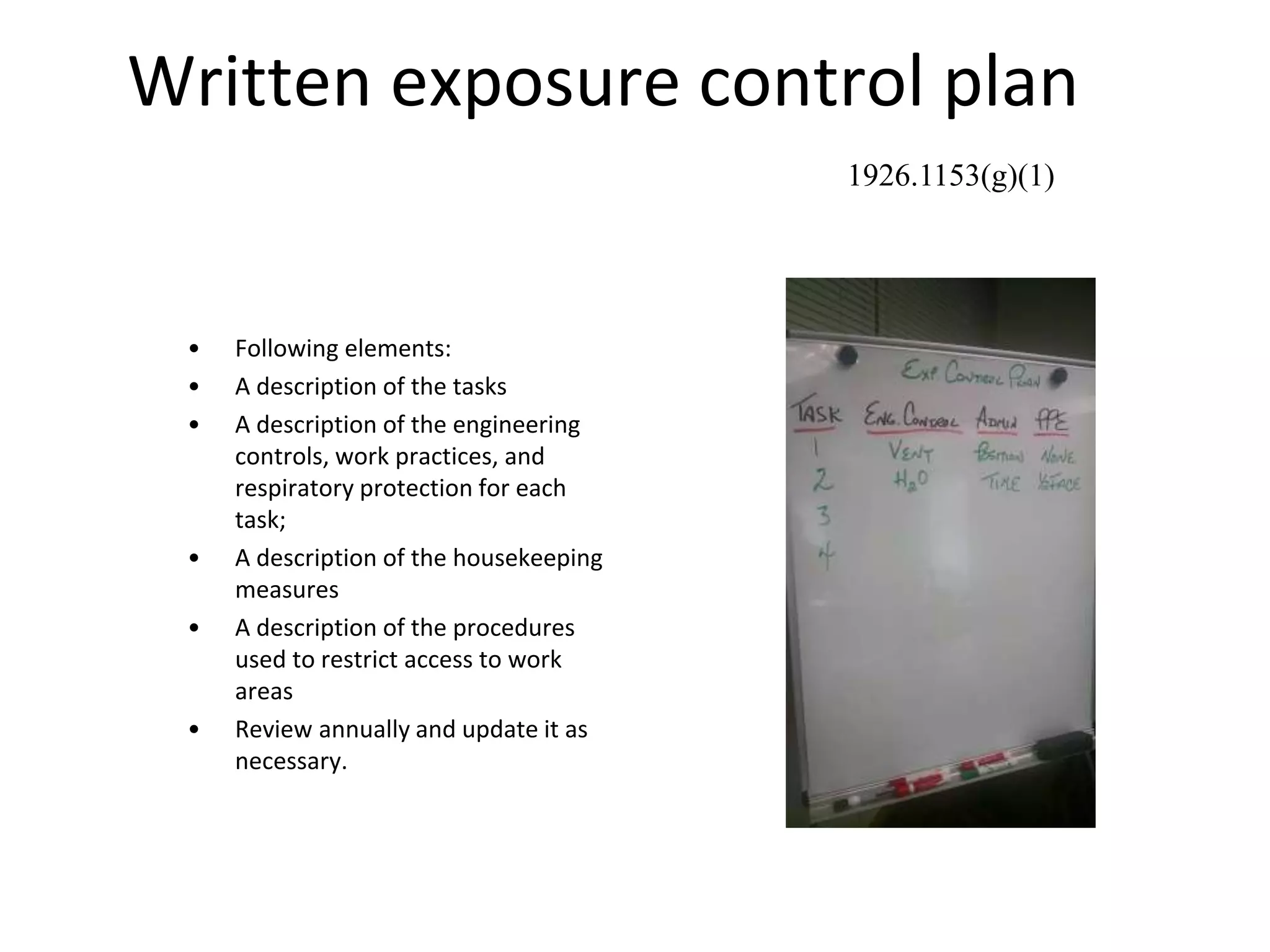



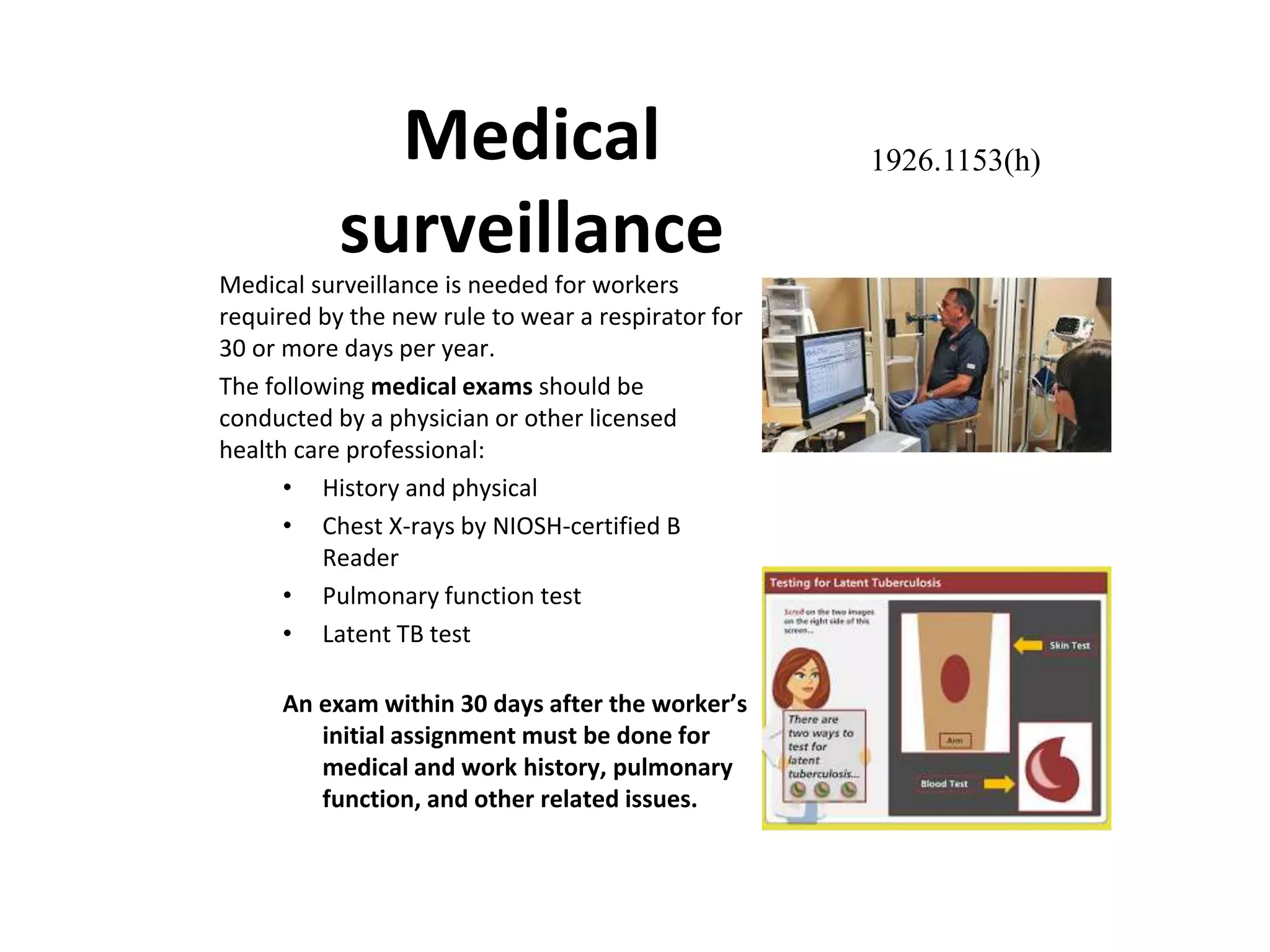


![Exposure assessment
A contractor is required to assess the
exposure of any worker who is exposed, or
may reasonably be expected to be exposed,
to crystalline silica at or above the action
level of 25 micrograms per cubic meter of
air (half the PEL). This can be accomplished
by:
(1) The performance option, defined as any
combination of air monitoring (personal
breathing zone [PBZ] sampling) or use of
objective data.](https://image.slidesharecdn.com/respirators2018-180213223450/75/Respirators-2018-95-2048.jpg)
